The Panama Canal is considered one of the great achievements of the early 20th century. The canal was originally started in 1880 by the French but the site was abandoned 9 years later. The United States resumed construction in 1904 and completed passageway between the Atlantic and Pacific Oceans in 1914. The canal connects the port cities of Panama City on the Pacific side to Colon on the Atlantic side. The canal is 51 miles from deep water in the Caribbean to deep water in the Pacific. The distance from the Atlantic entrance to the Pacific entrance is only 31 miles. An amazing 14,500 vessels pass through the Panama Canal each year.
Functionally, there are three sets of double locks, two lakes and one long rock cut canal. Ships entering the canal from the Atlantic side are raised 85 feet above sea level in 3 separate lifts to reach the elevation of Lake Gatun. Lake Gatun is a man-made lake that which give passage to ships for 21.5 miles. Leaving Lake Gatun, boats enter the long rock cut portion on the canal called Culebra Cut for a distance of 8.5 miles where it reaches the Pedro Miguel Locks. The Pedro Miguel locks is a single set of locks that lowers ships 31 feet into Lake Miraflores. Lake Miraflores portion of the canal is only one mile before reaching the Miraflores locks. The Miraflores locks are a two stage locks that lowers ships 54 feet to the sea level of the Pacific Ocean.
The original locks are all the same size and the maximum size ship that can pass through these locks are classified as Panamax ships. These locks are still in use by the majority of ships and the entrance to the Gatun locks are shown in the next two photos.
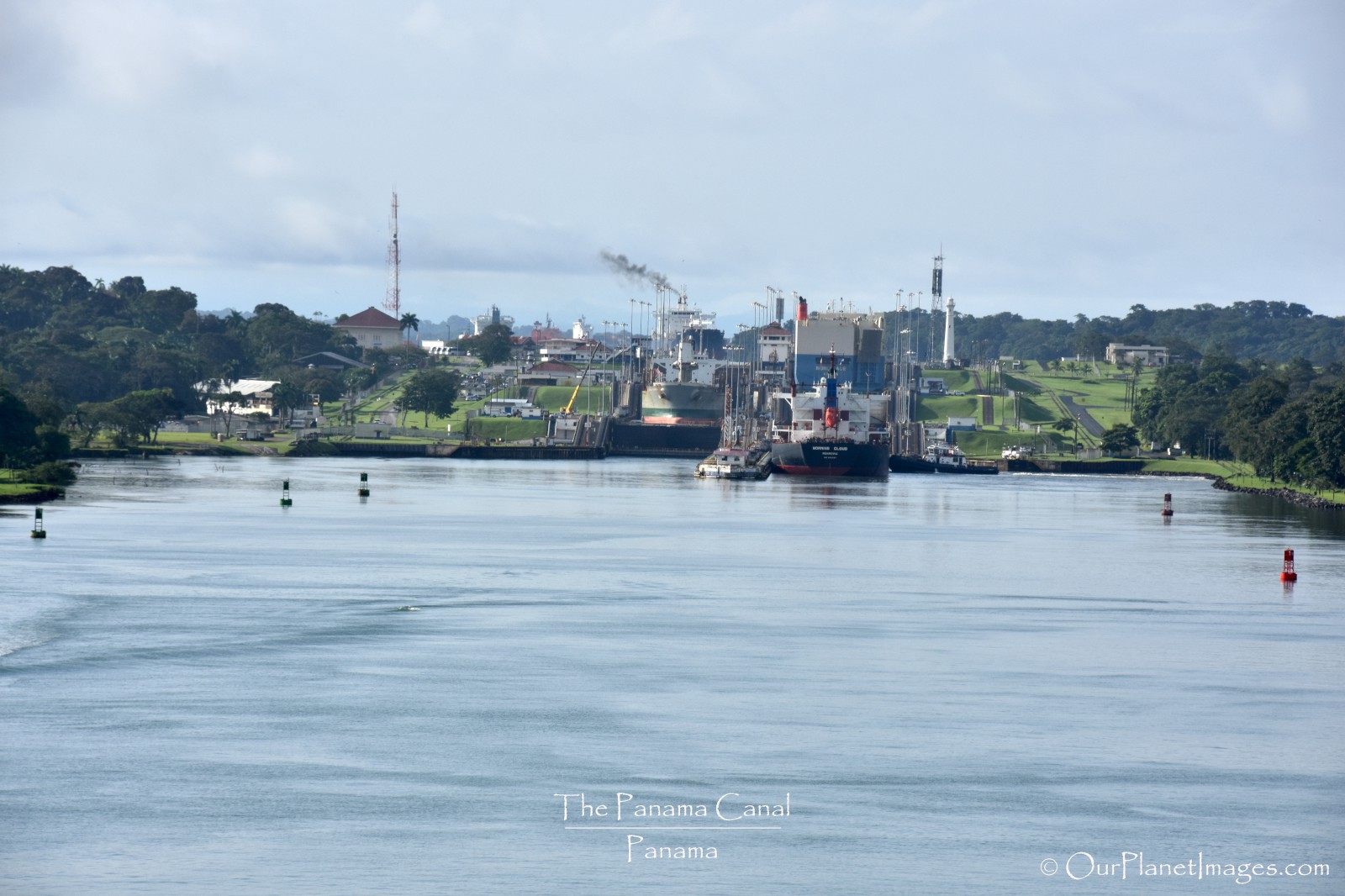

New three chambered locks were added in 2016 on the Atlantic and Pacific that allows passage of super-sized ships that are classified as neoPanamax ships. The locks on the Atlantic side are called the Agua Clara locks and the Pacific Side are called the Cocoli locks. The entrance to the Agua Clara locks are shown in the next two photos.
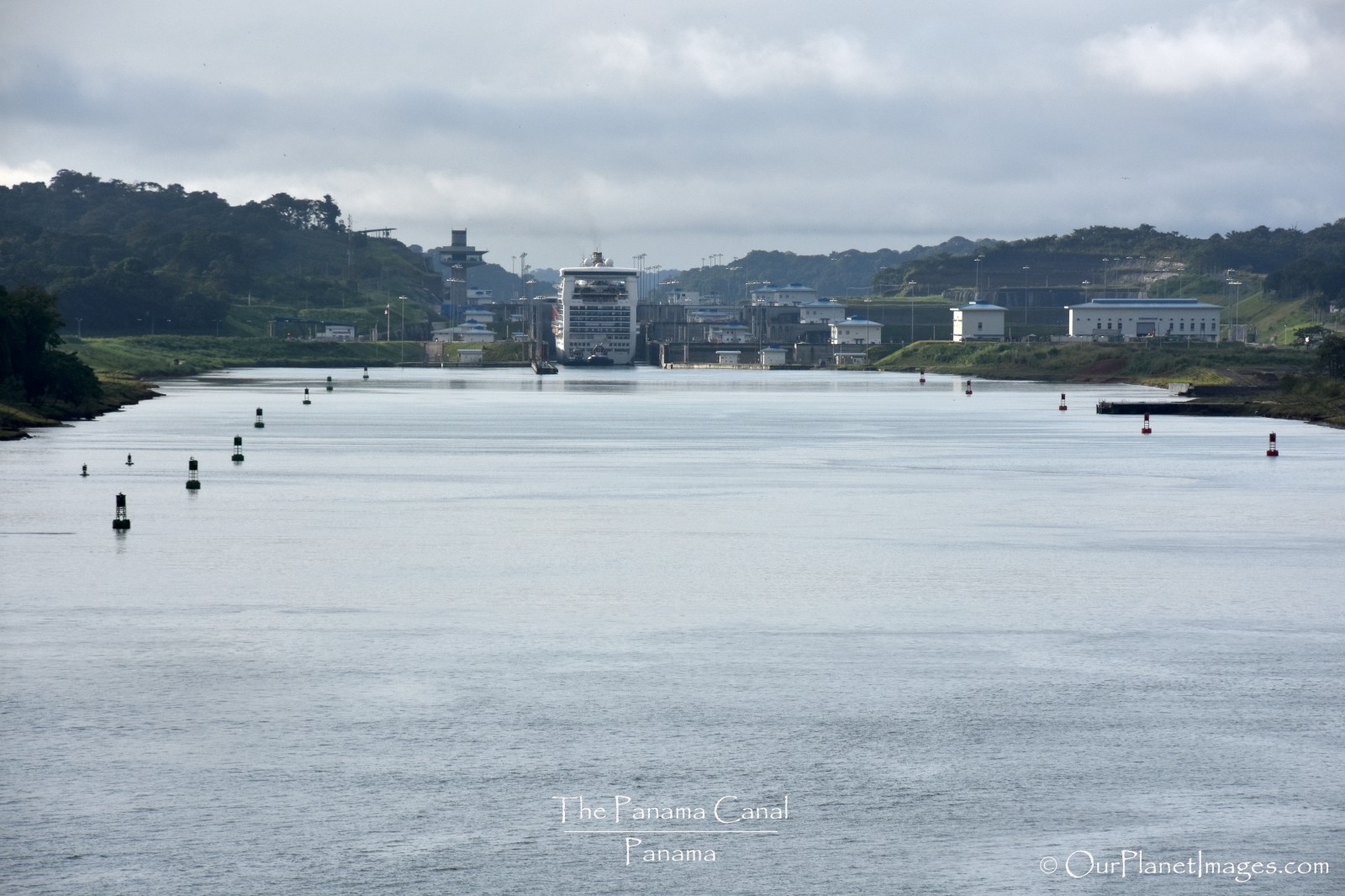
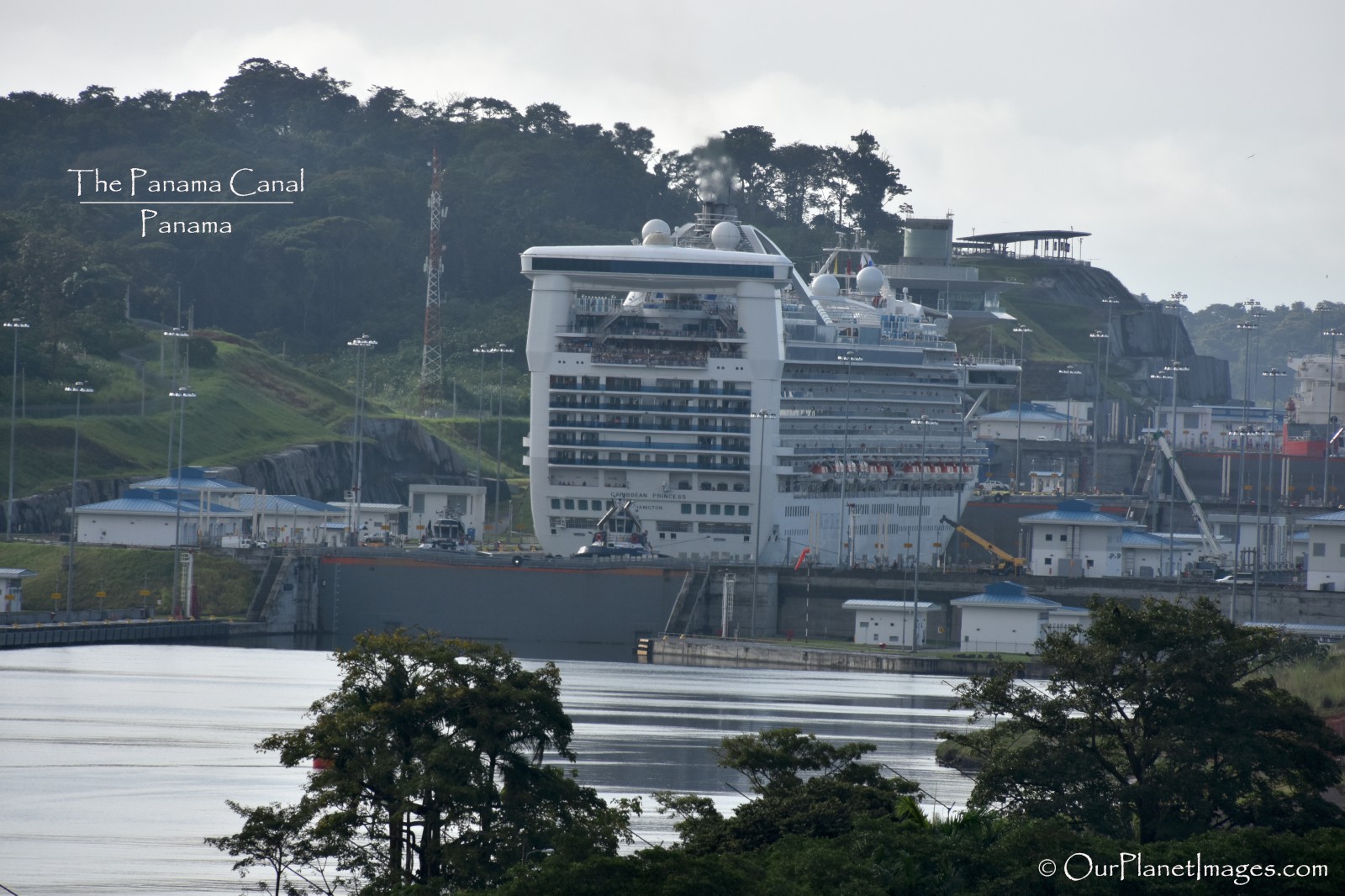
Ships enter the first set of locks at sea level. Once the ship is positioned in the lock with the assistance of local tug boats the lock’s gate is closed and water enters the lock raising the ship. When the level of the first lock is equal to the second lock the ship is moved into the second lock.
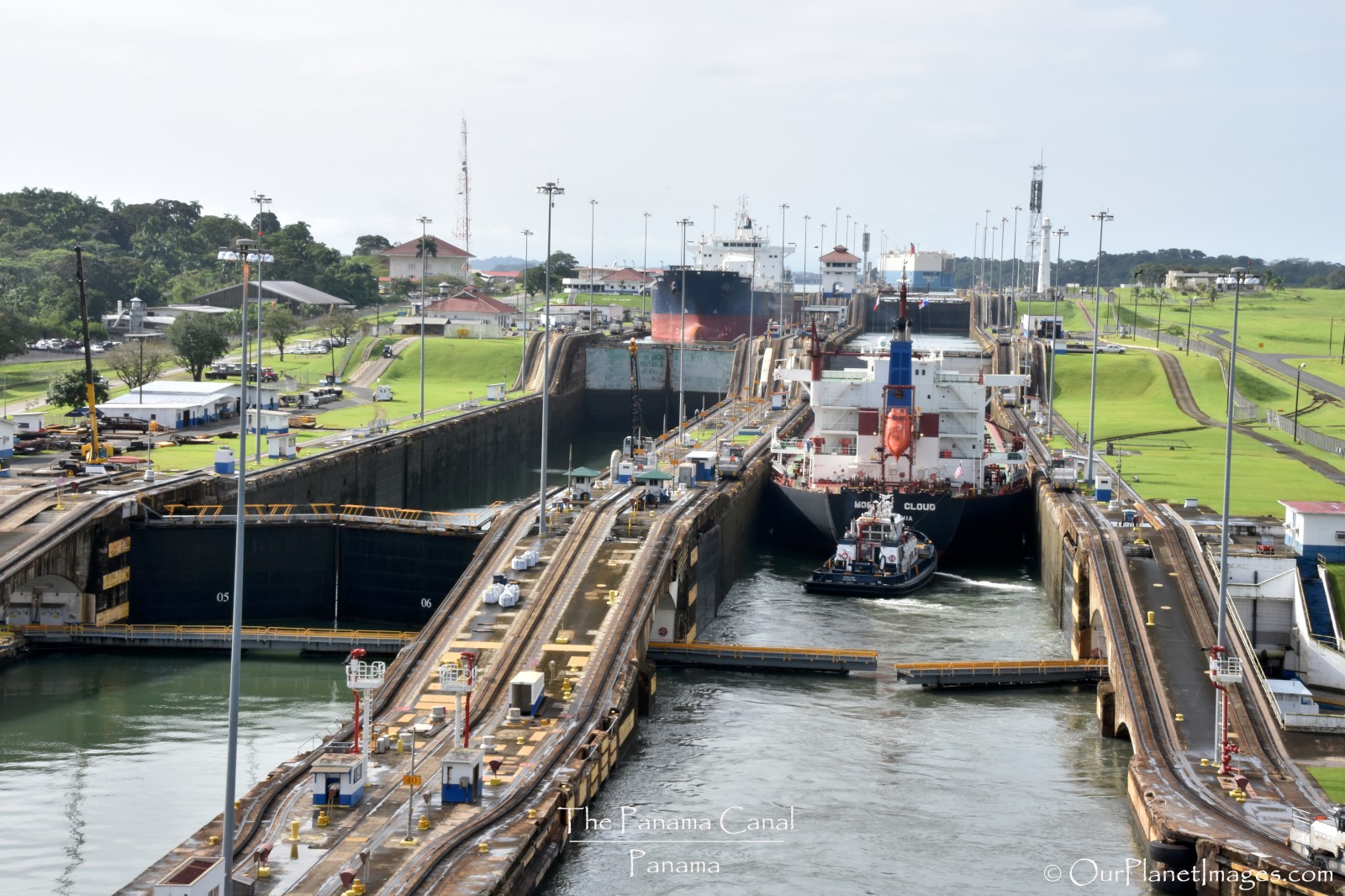
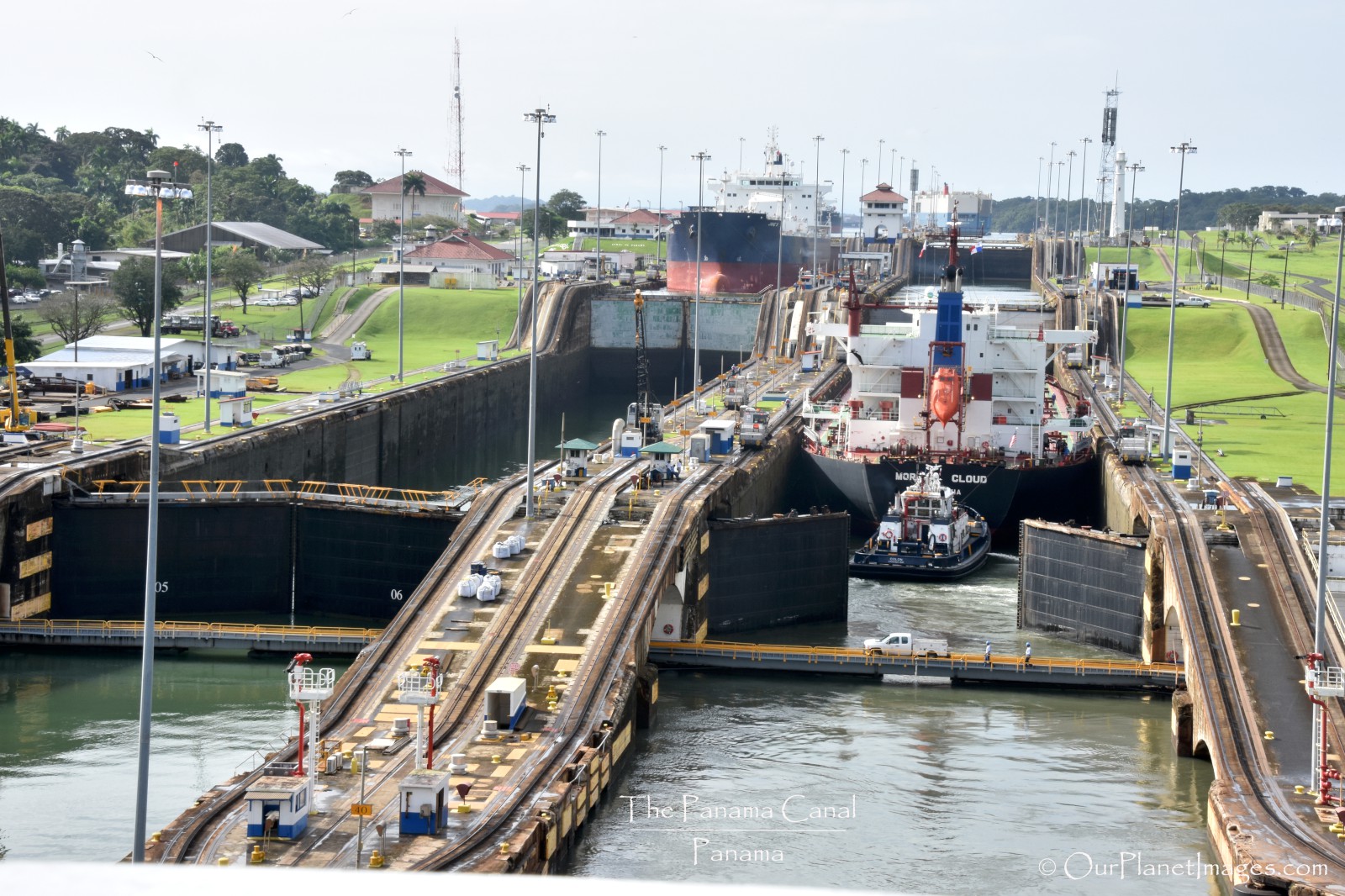
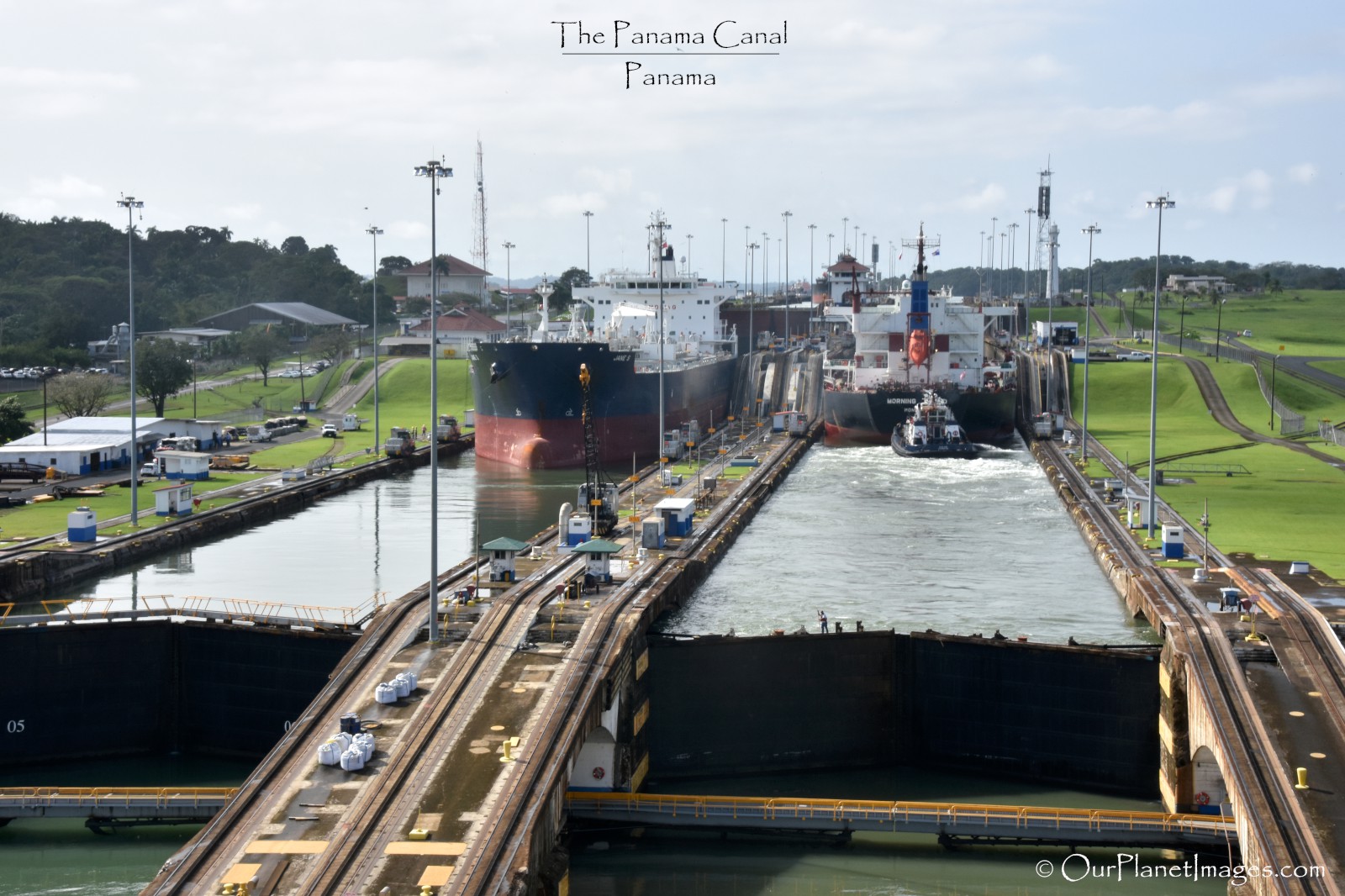
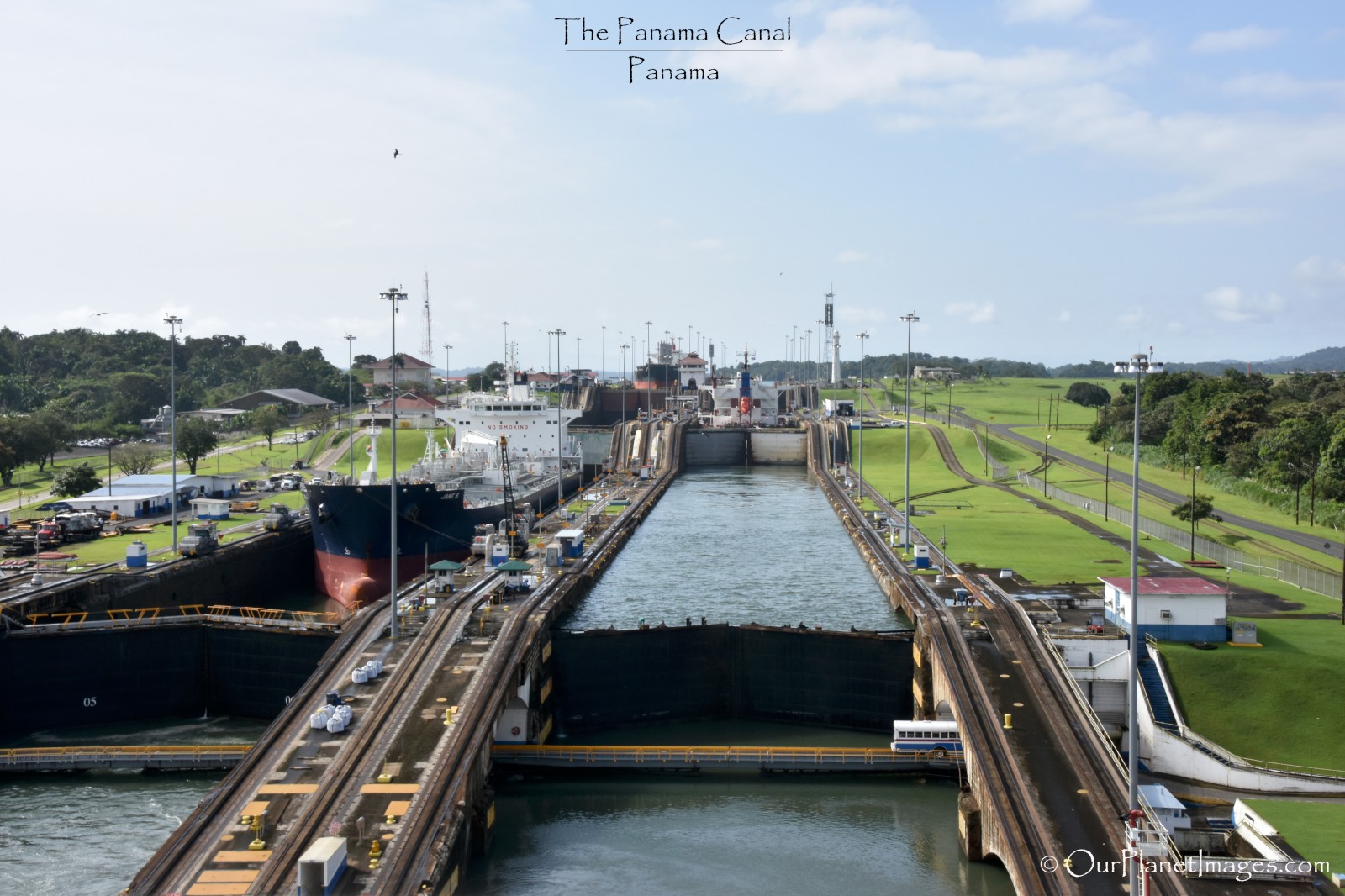
An interesting fact that most people don’t know is that there is a retractable bridge that allows traffic to cross the entrance of the canal when ships are not entering or exiting the Gatun Locks. I have actually driven across this bridge when I lived in Panama and it is an eerie feeling to know that there is a 20+ foot wall of water just feet away. This bridge shown in the next two photos.

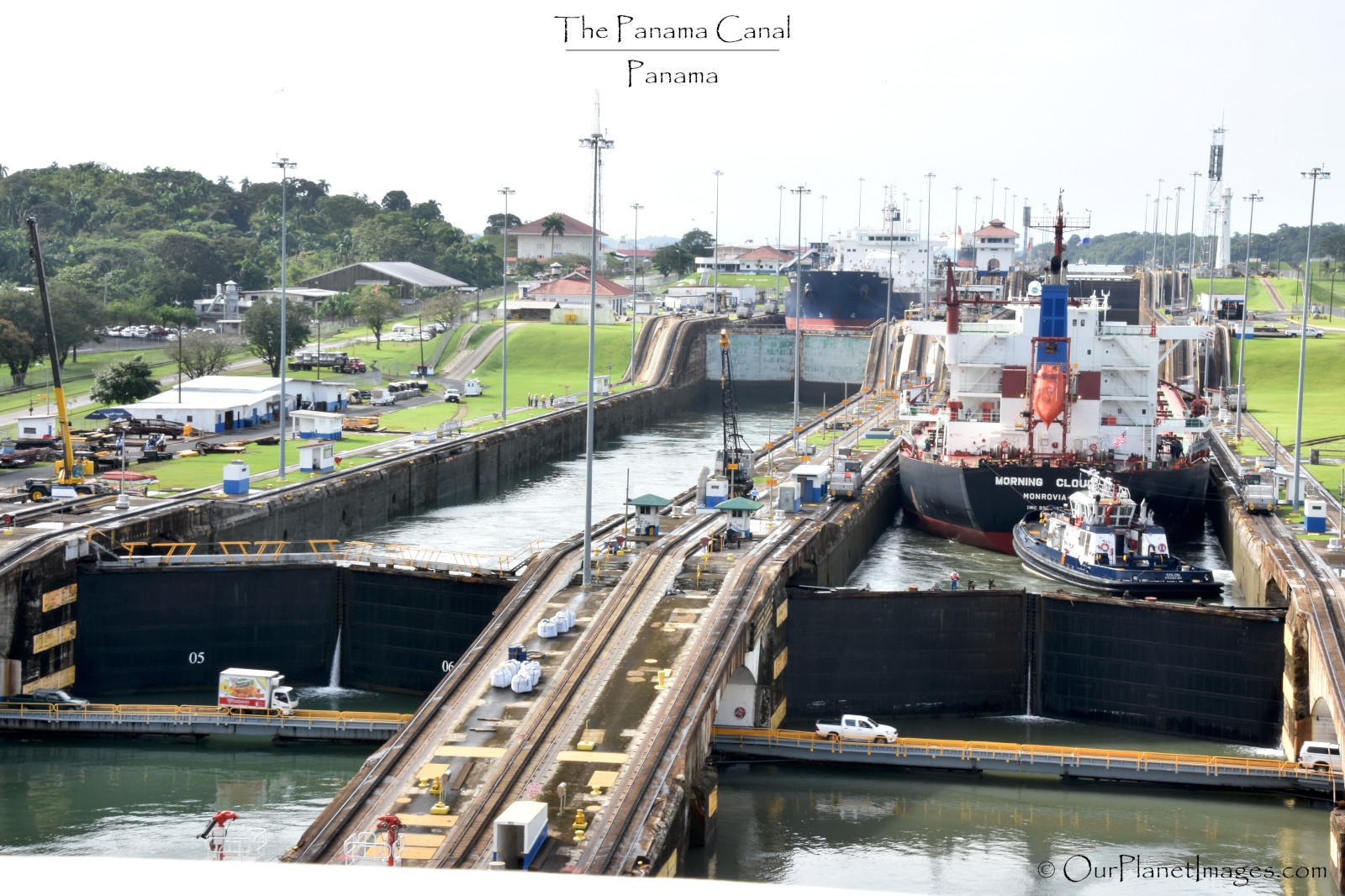
Ships are assisted through the locks by electric towing locomotives and tug boats. The electric towing locomotive system provides complete control over the movement of the ships while transiting through the locks.
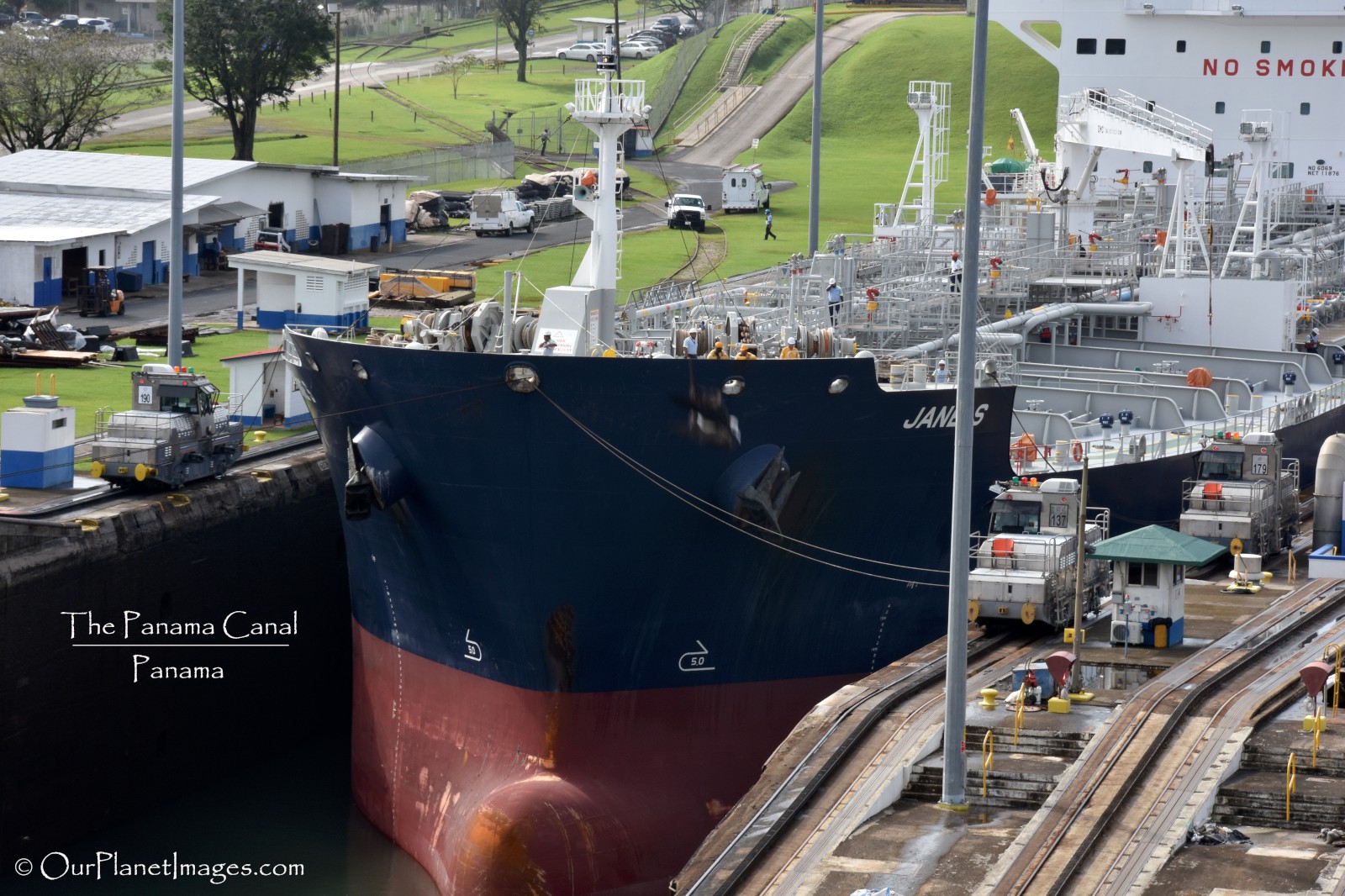
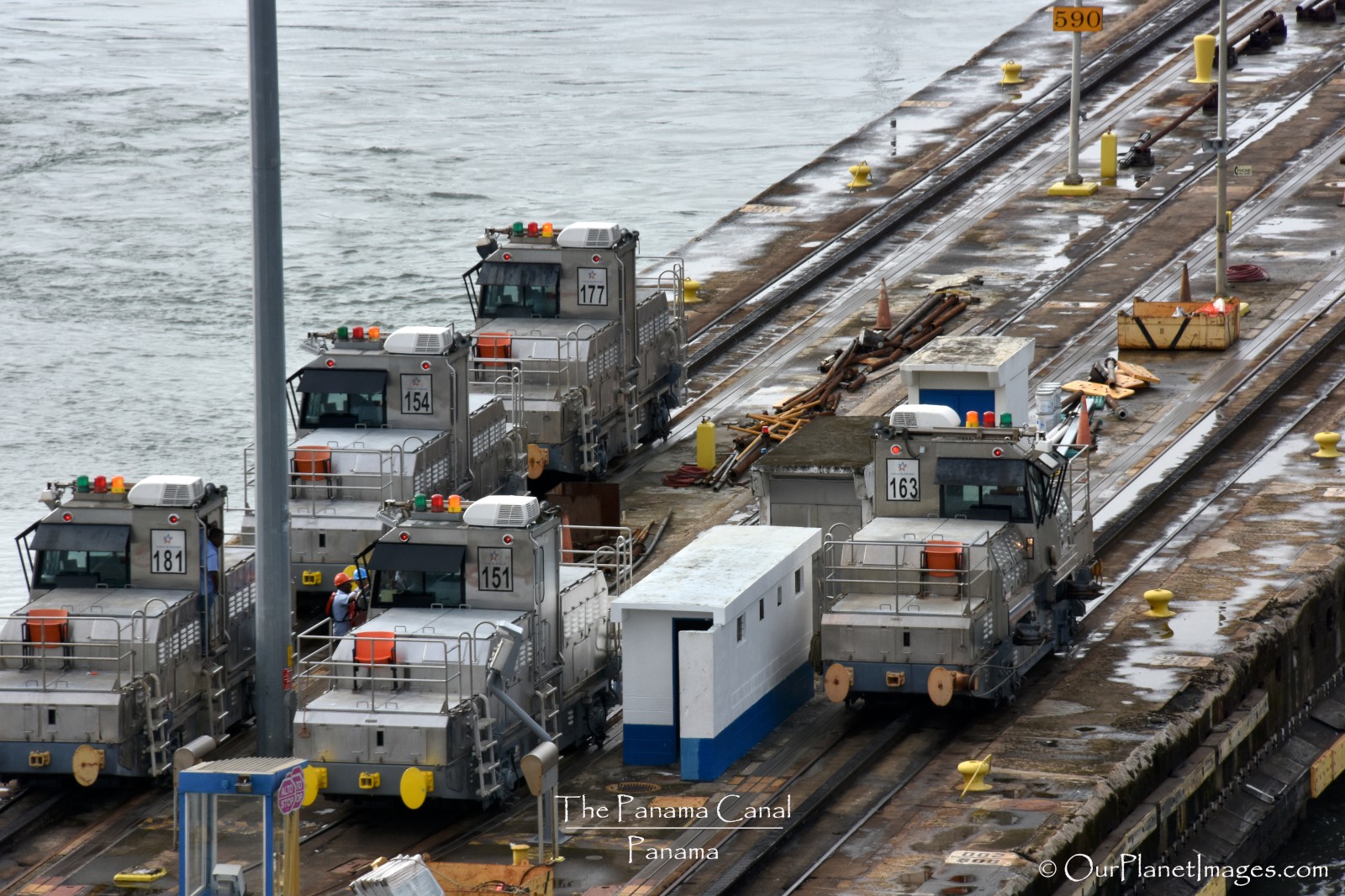
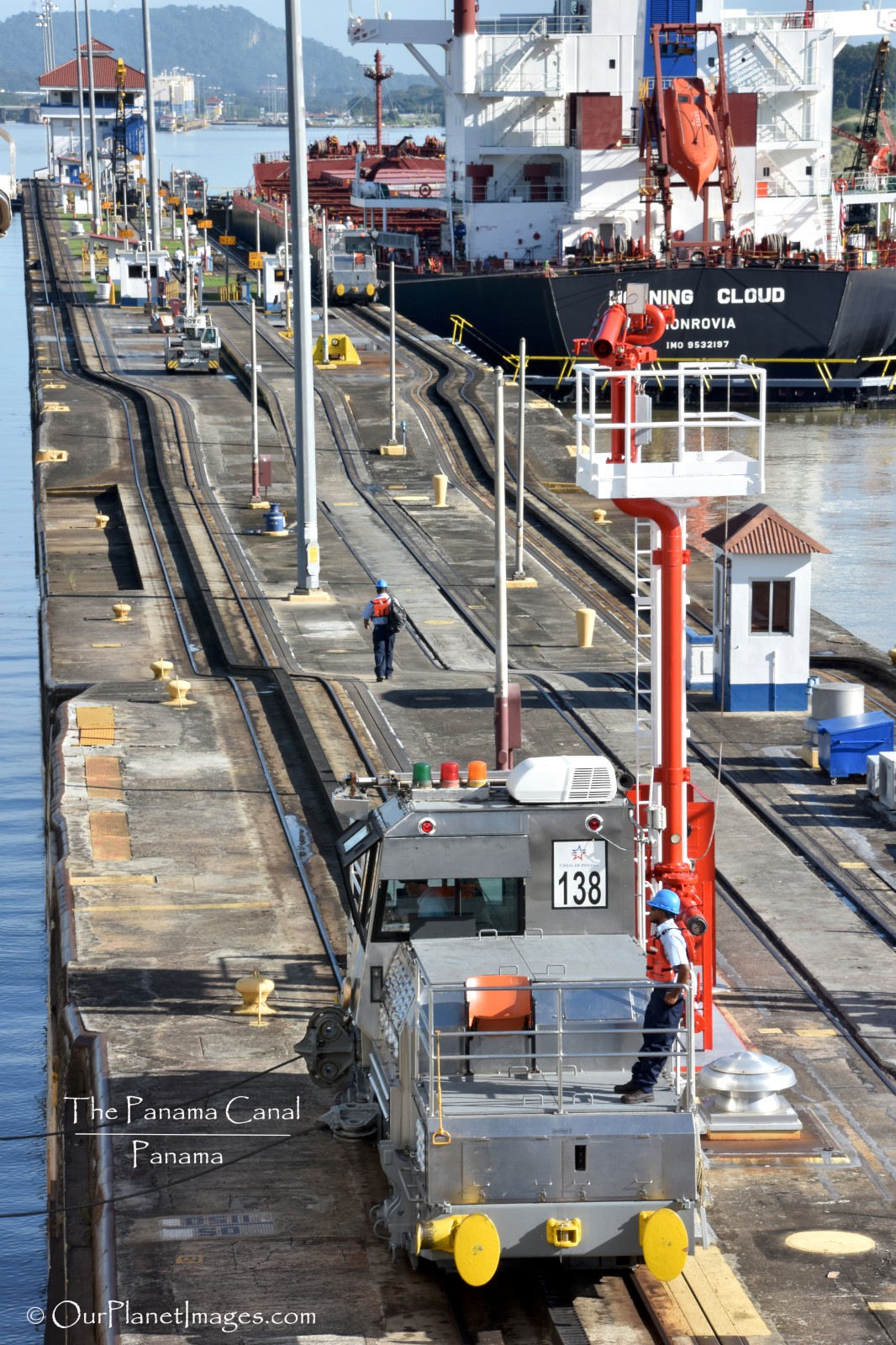
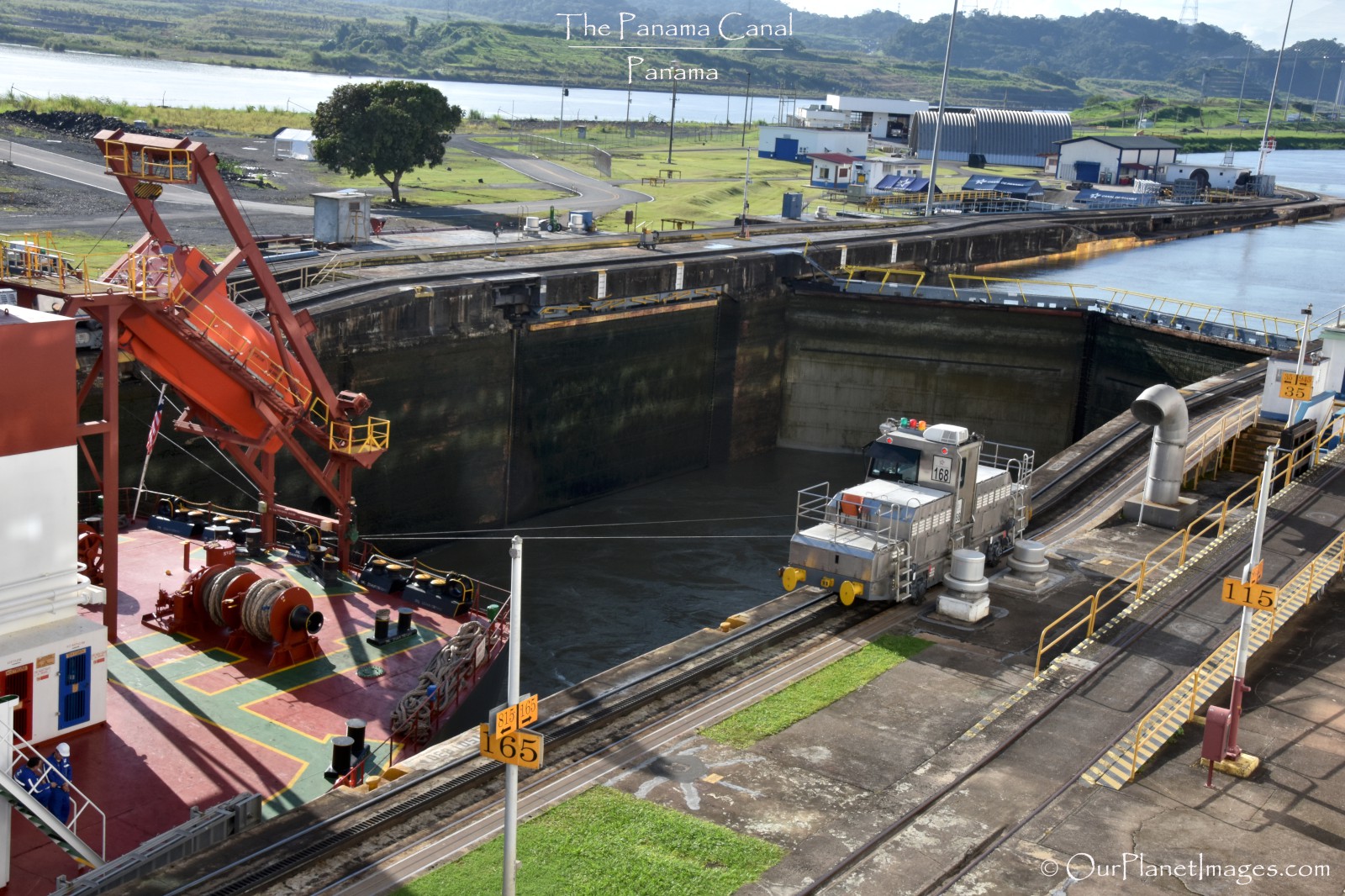
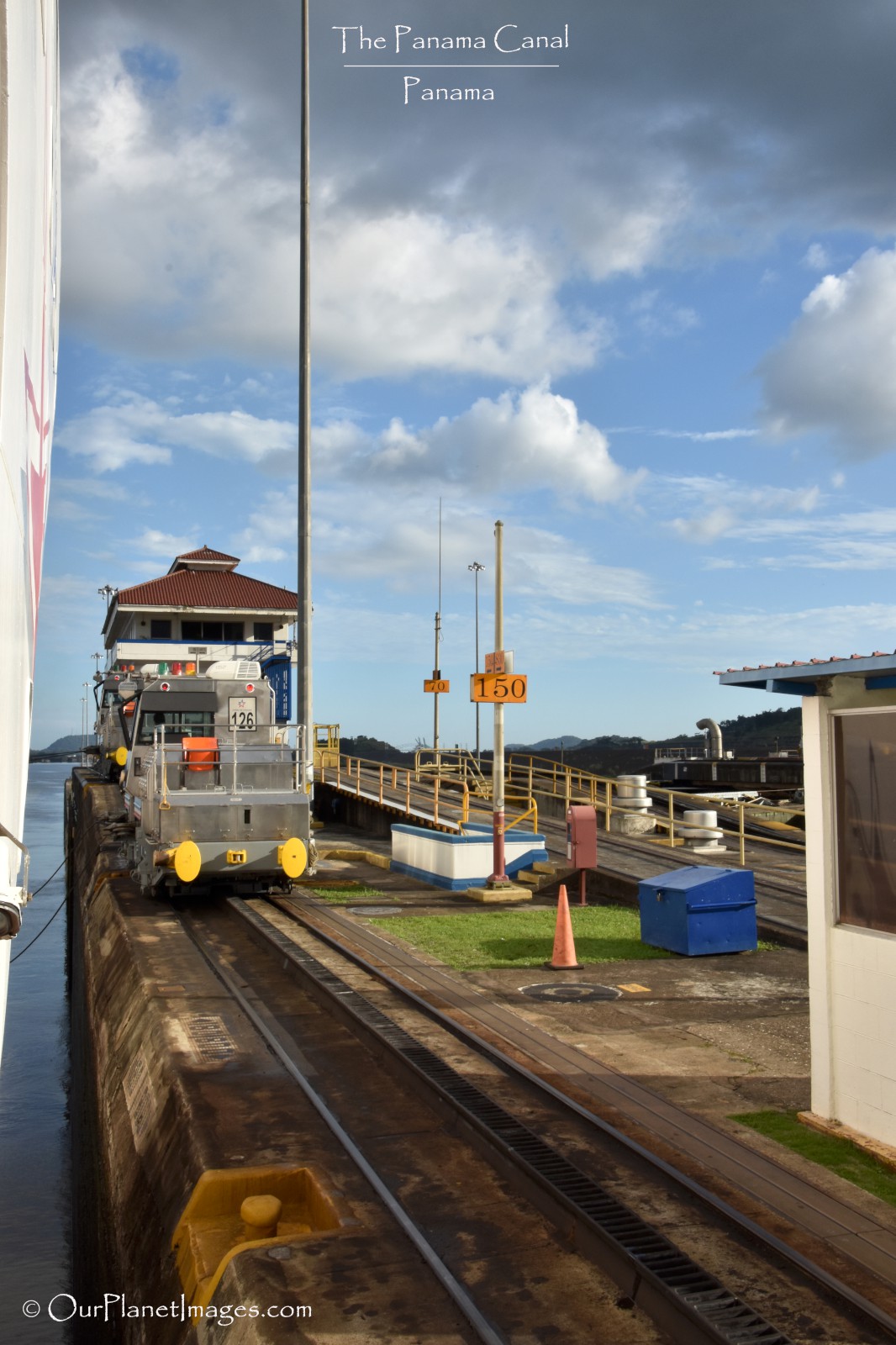
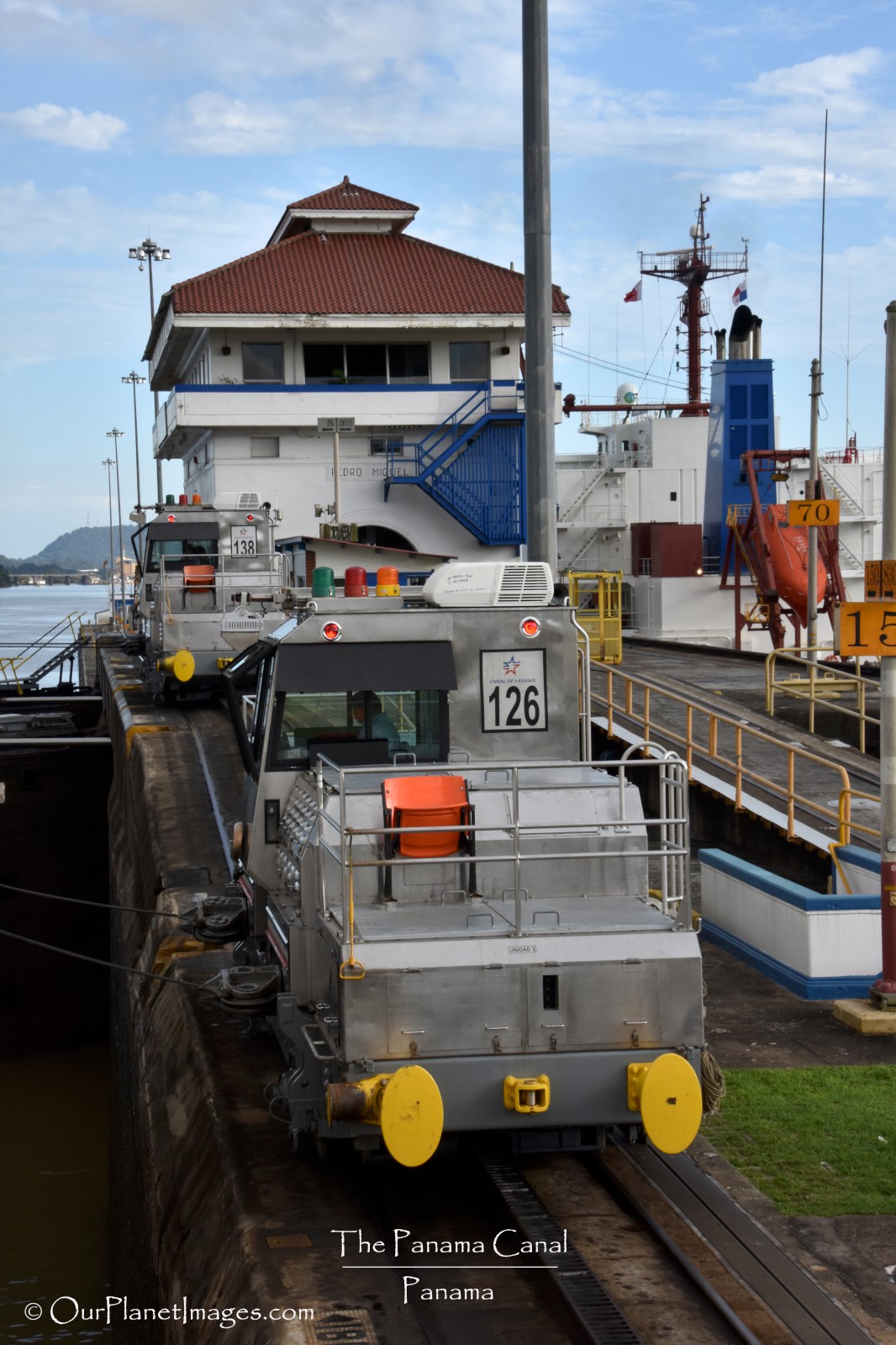
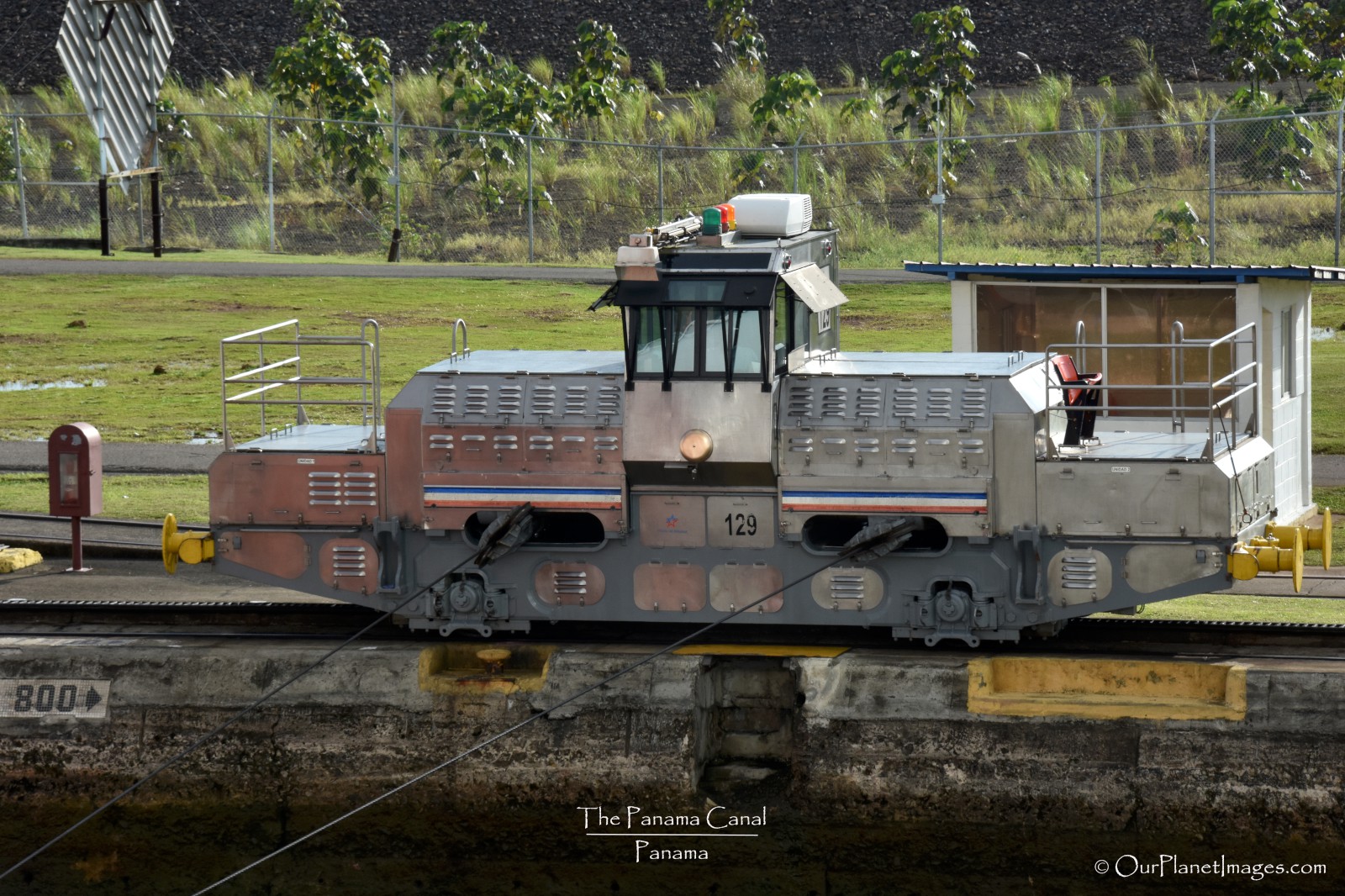
Tug boats position the ships when they are entering and exiting the locks and when they are transiting the Culebra Cut. There are several photos that show tug boats assisting ships and they have critical jobs even if it is pouring rain in the tropical rain forest.
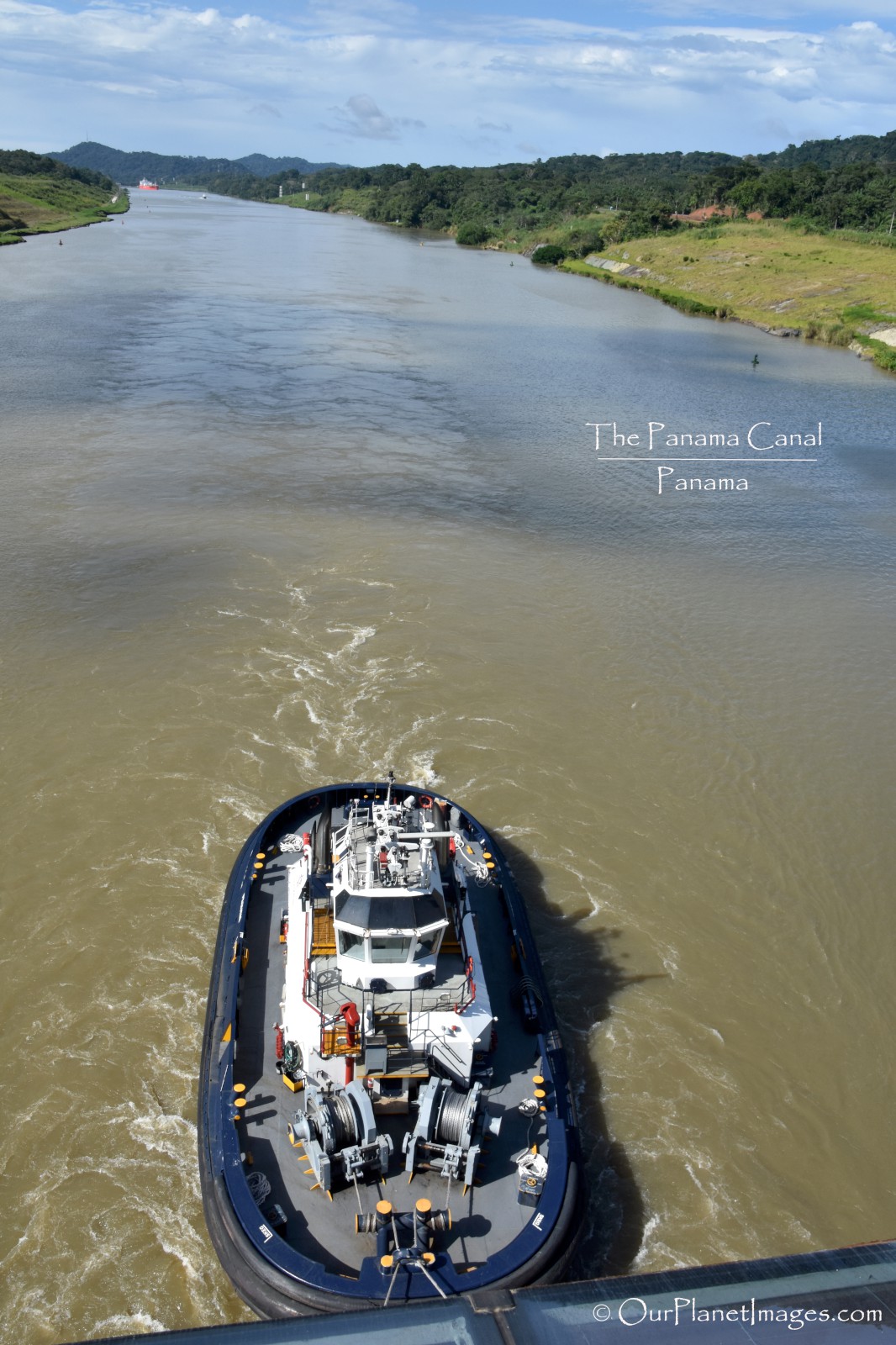
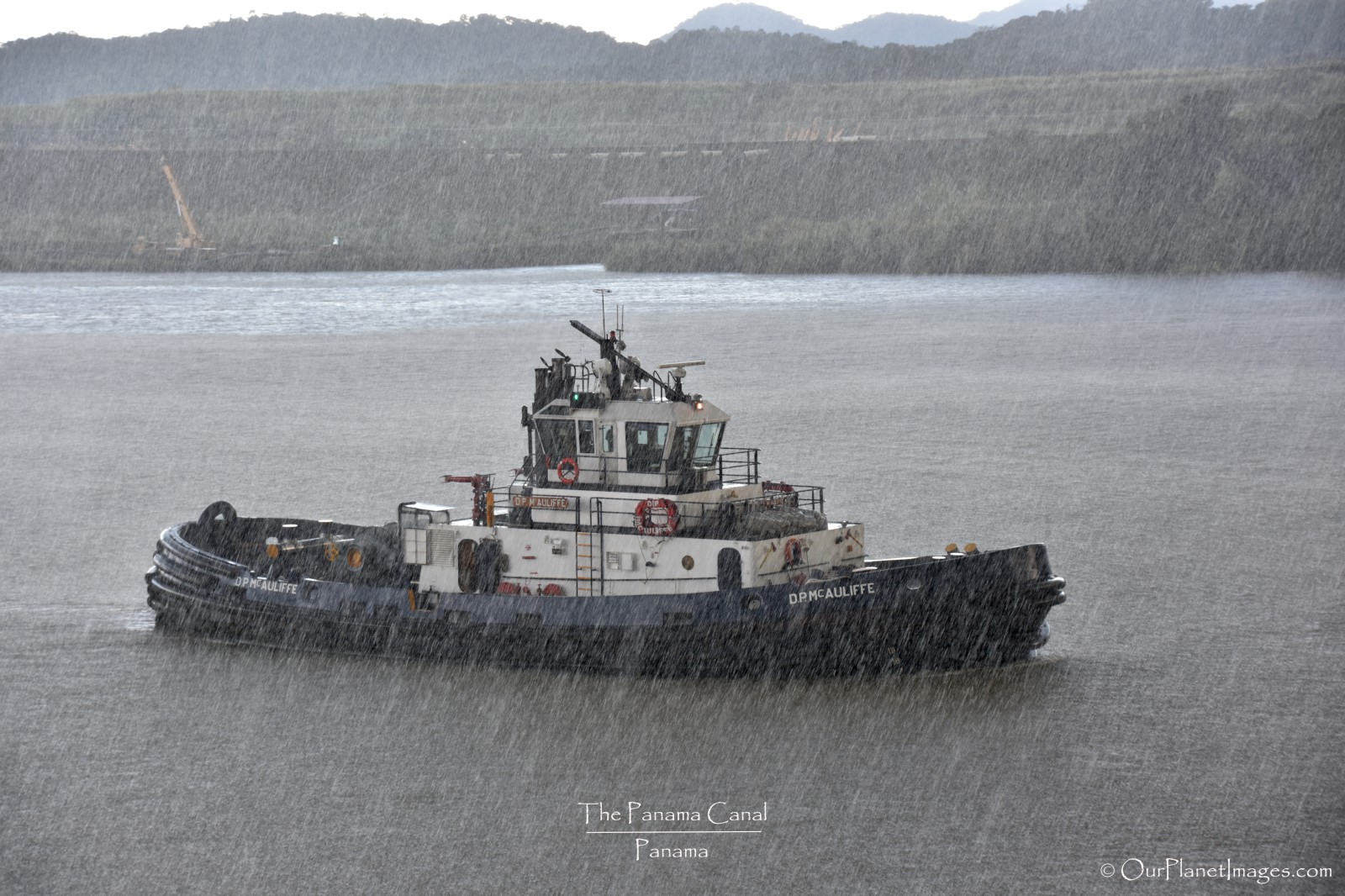
Each lock have pairs of chambers that are side by side to accommodate two lanes of traffic. Traffic can go either in opposite direction at the same time or in the same direction depending on traffic needs.
Ships are raised or lowered by changing the level of the water in each lock when the level of two locks are equal the lock doors will be opened allowing ships to move to the next lock.
No pumps are used at the Panama Canal, the water does its work by force of gravity alone. Water is admitted or released through giant 18 feet diameter culverts. To fill a lock, the main valves at the lower end of the lock are closed and those at the upper end are opened. The water pours from the lake into the lock and raises the ship to the level of the next lock or the lake. To drain a lock, the valves at the upper end of the lock are closed while the valves at the lower end are opened. This lowers the ship to the level of the next lock or the sea level.
This process is seen in the next two photos.
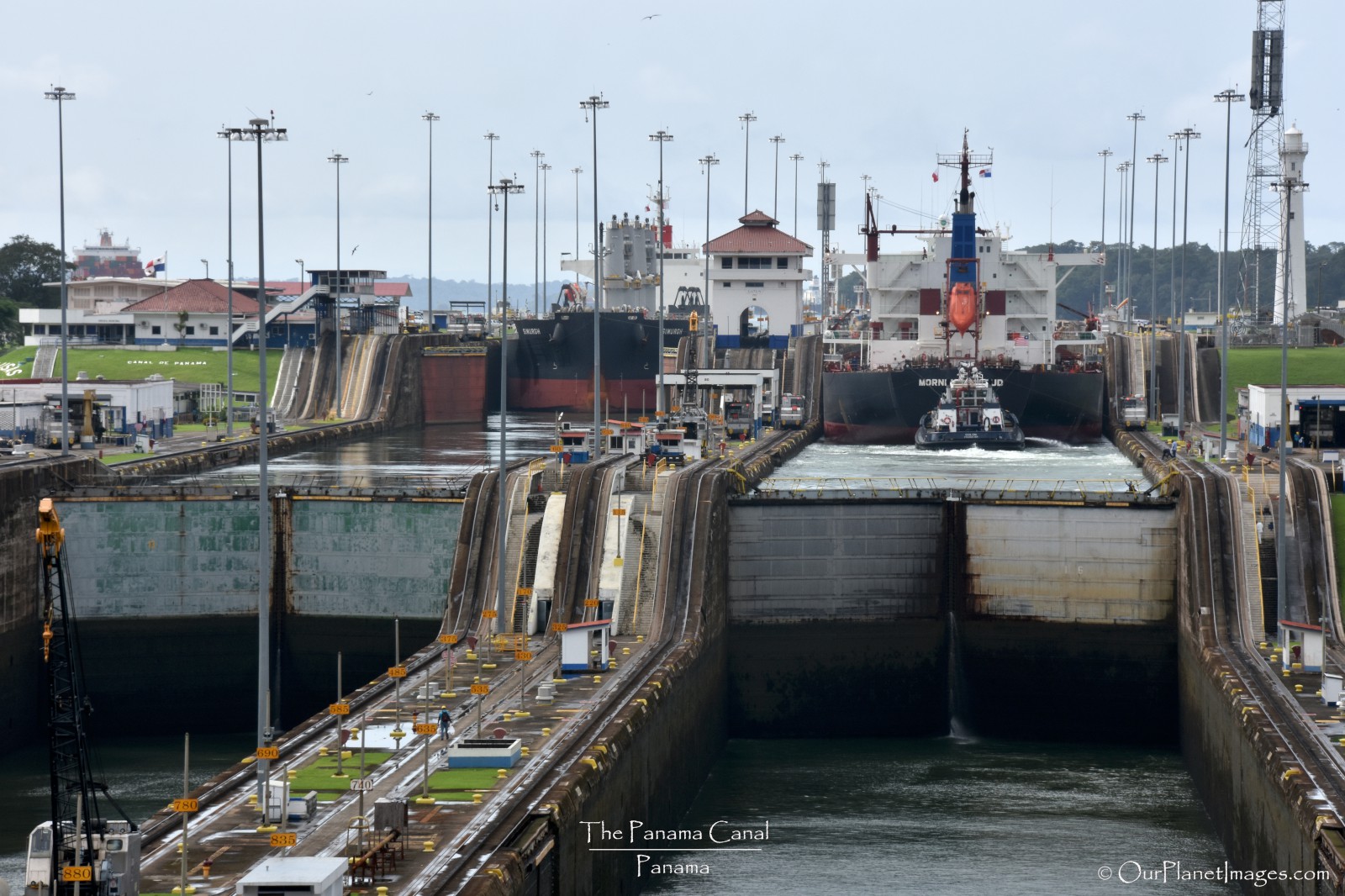
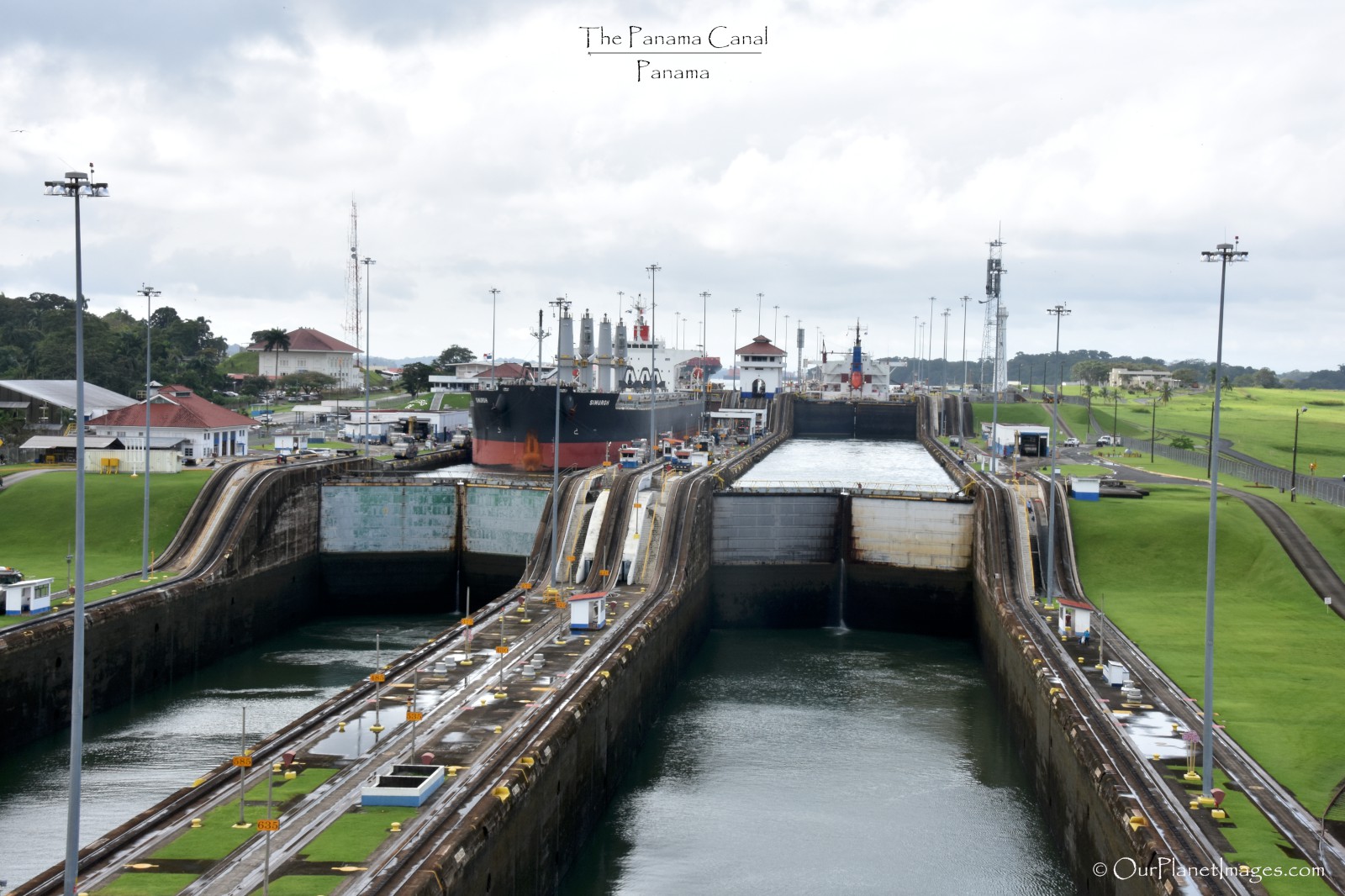
All locks are the same dimensions and are 1000 ft. long and 110 ft. wide. The lock chambers are made of concrete with side walls from between 45 to 55 ft. thick at the bottom and taper to 8 ft. thick at the top. The bottom of the chamber is 60 ft. thick.
All lock gates are all 64 ft. wide by 7 ft. thick and close in a wide V. However, the gate heights vary from 47 ft. to 82 ft. depending on the location. For example, the lock gates on the lower chamber at the Miraflores locks are the highest because of the extreme variation in the Pacific Ocean tides.
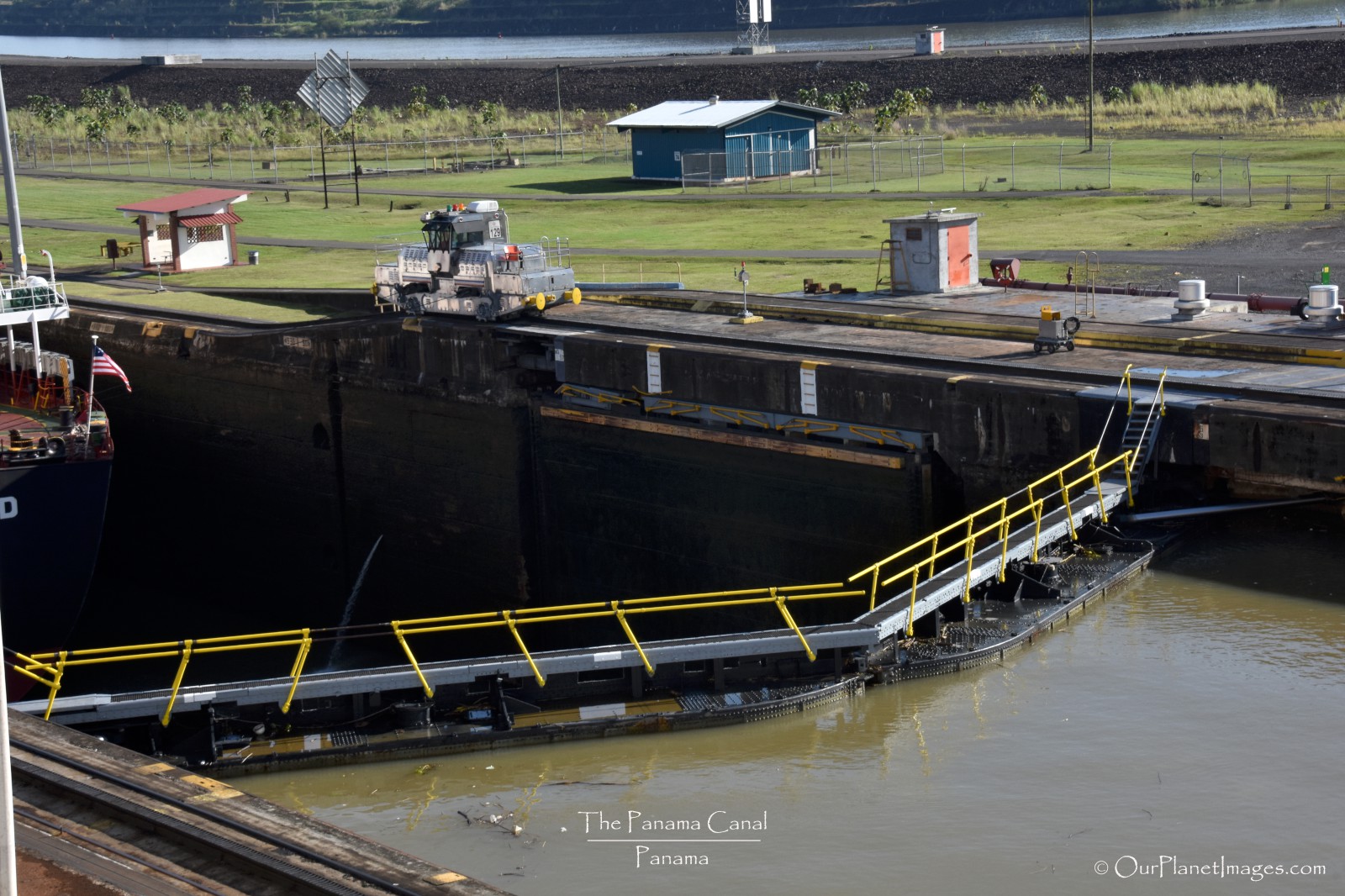
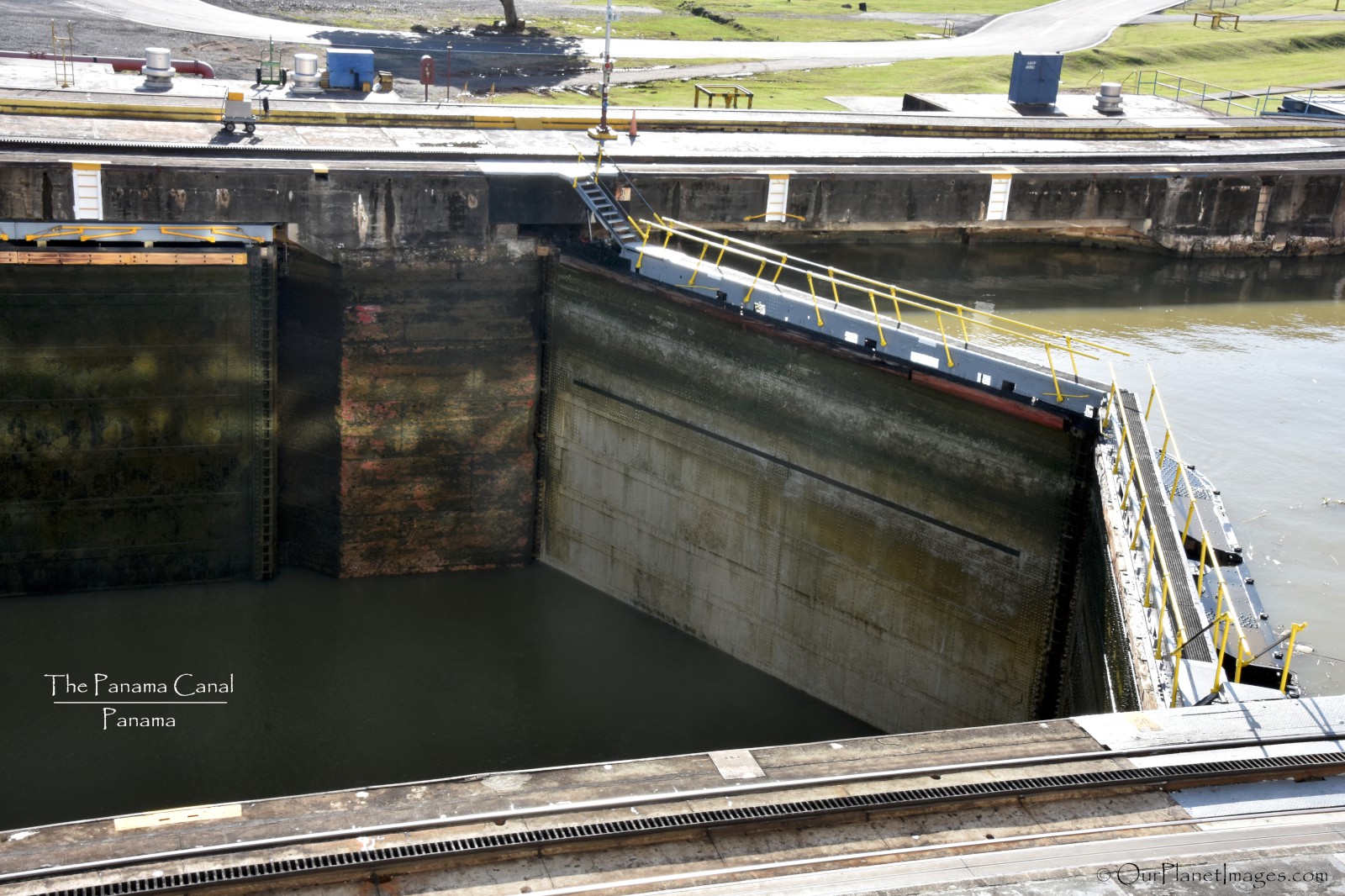
The following photos are what ships see as they leave the Gatun locks and entering Lake Gatun.
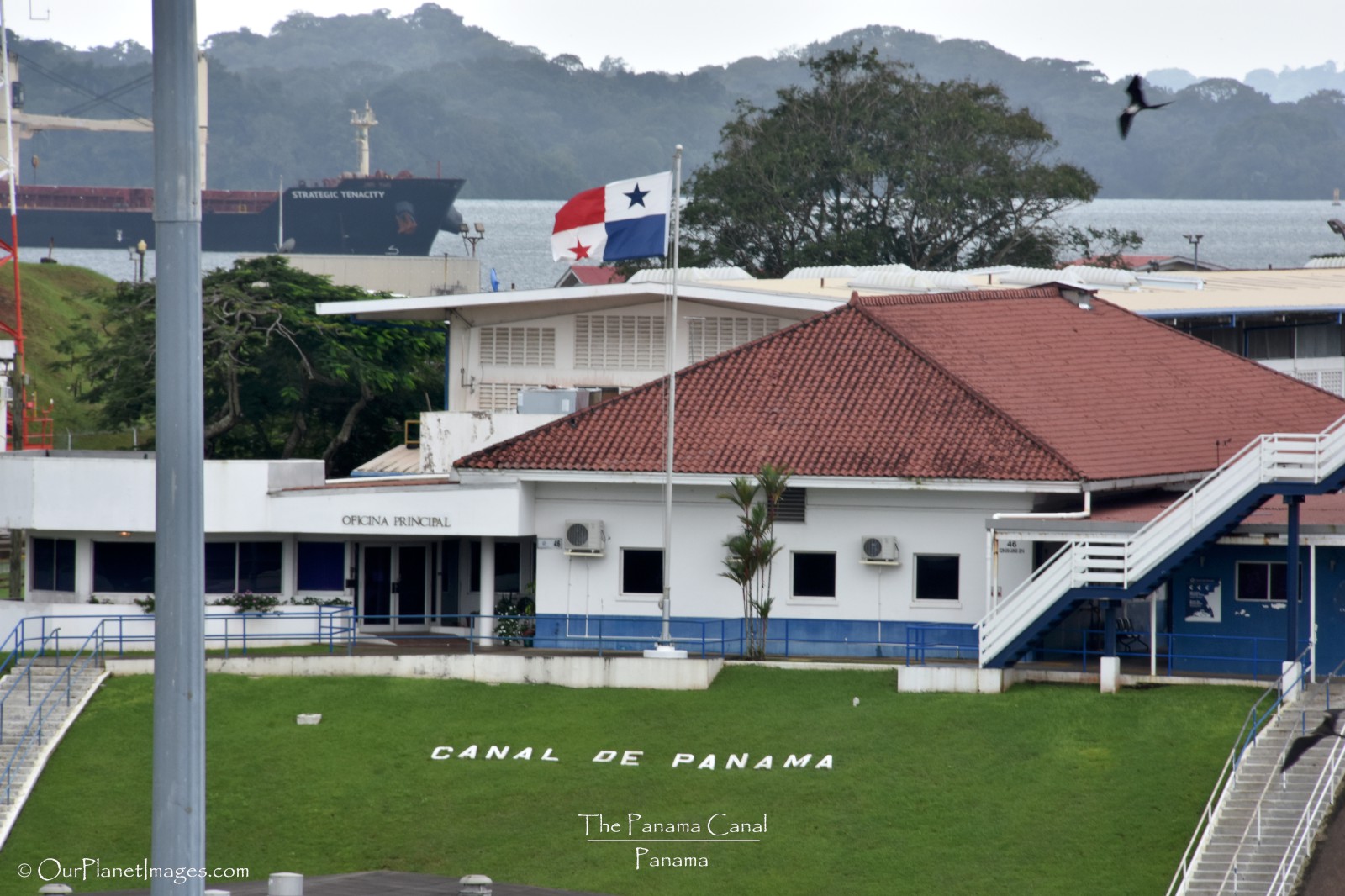
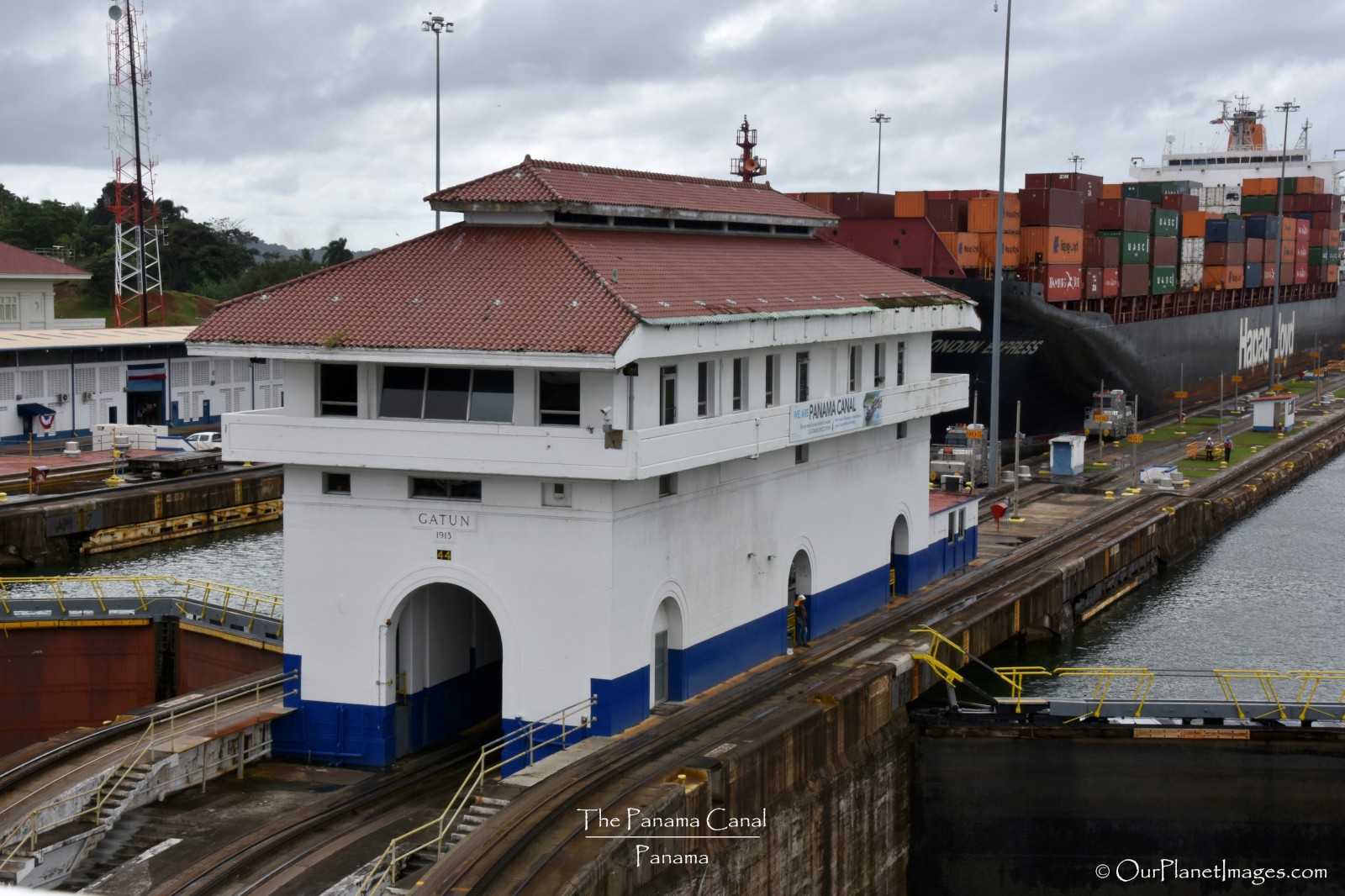
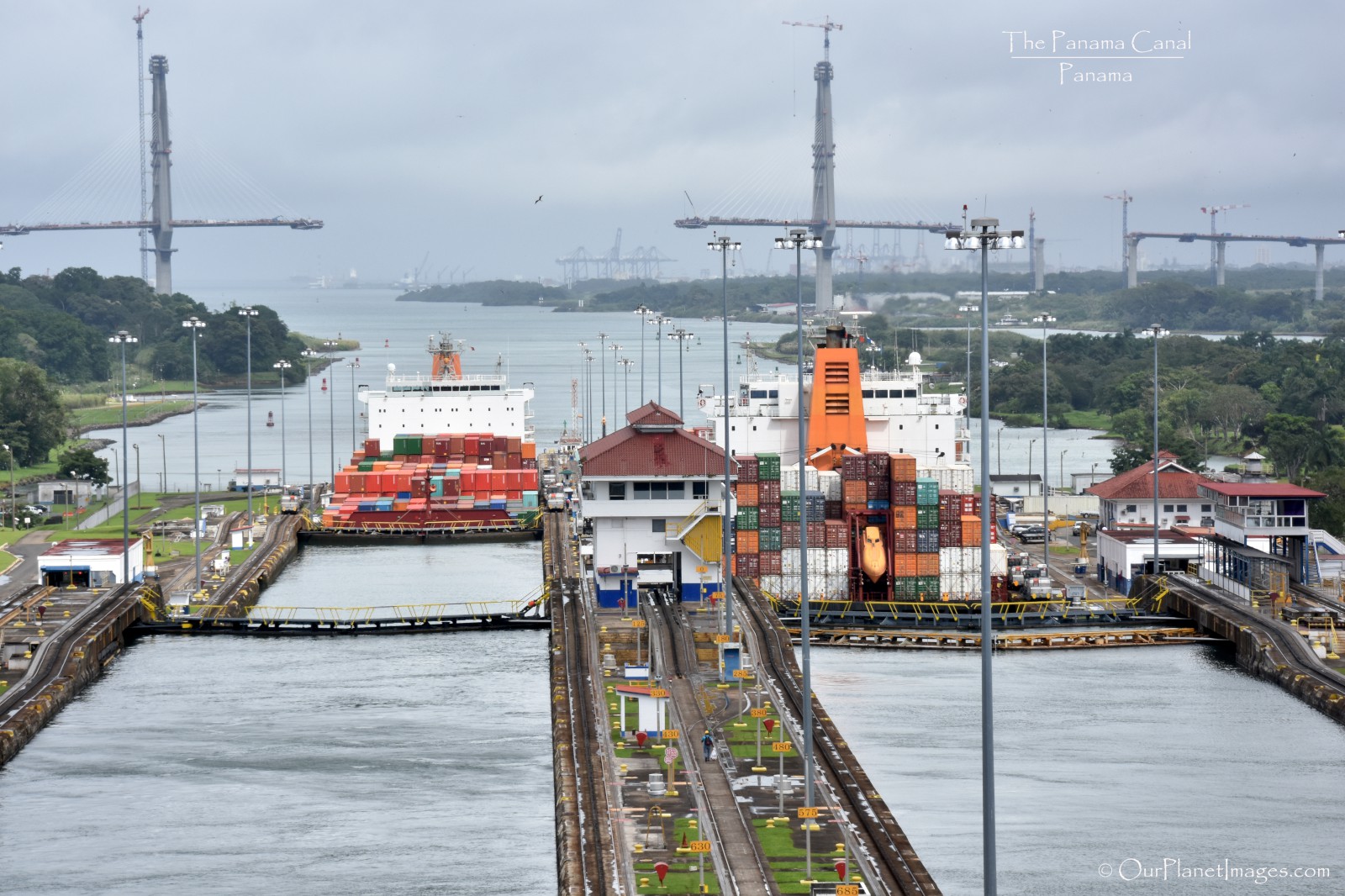
Lake Gatun is the longest portion of the Panama Canal and probably the most unknown. Lake Gatun is an artificially created lake that was designed to serve as the major portion of the transit between the Atlantic Ocean and the Pacific Ocean. Damming the Chagres River created an 85 ft. deep lake in the middle of the Panama Jungle. Traveling through Lake Gatun is a beautiful journey that allows you to see virgin jungles that are exactly like they were when Christopher Columbus saw them hundreds of years ago.
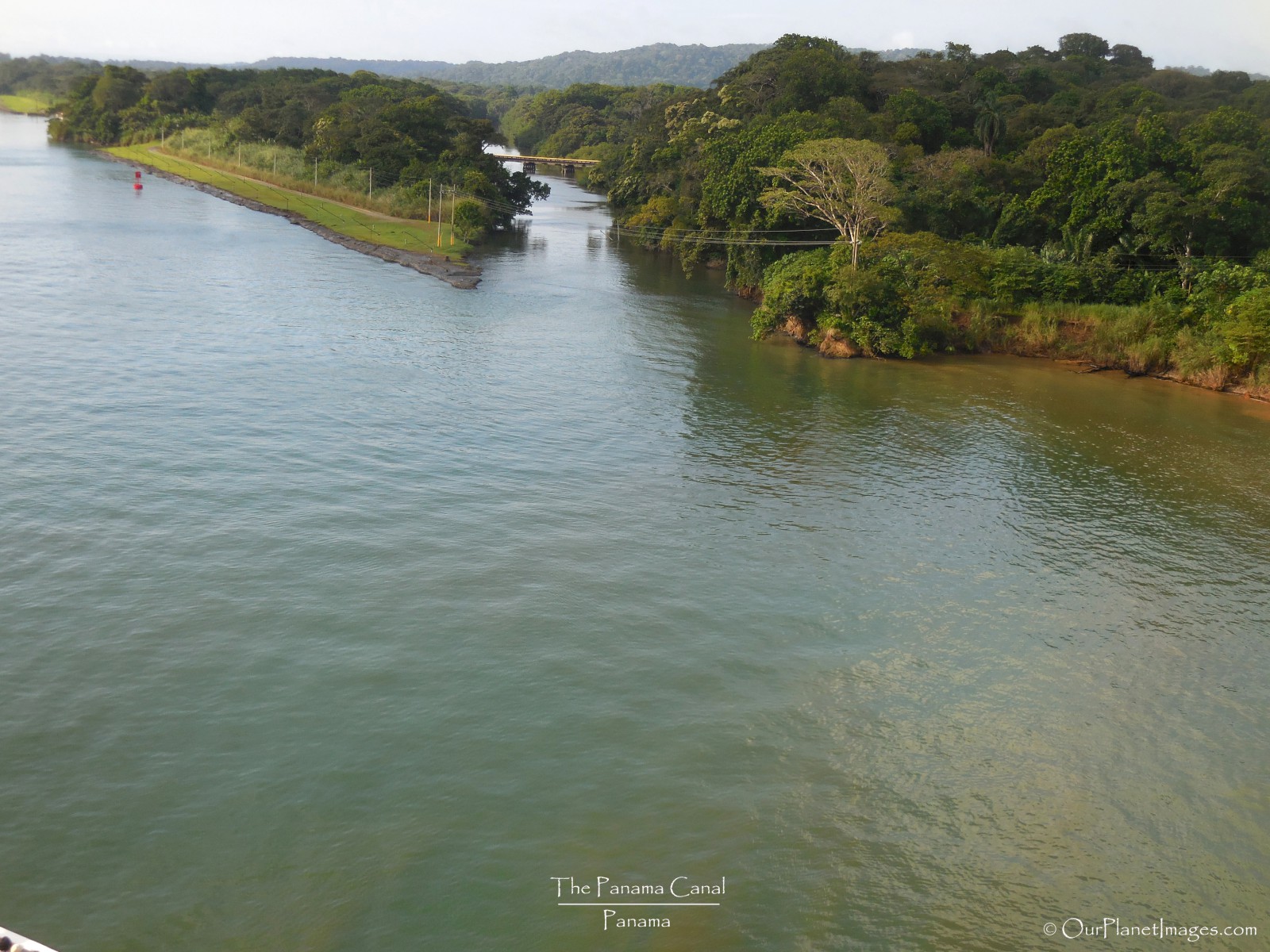
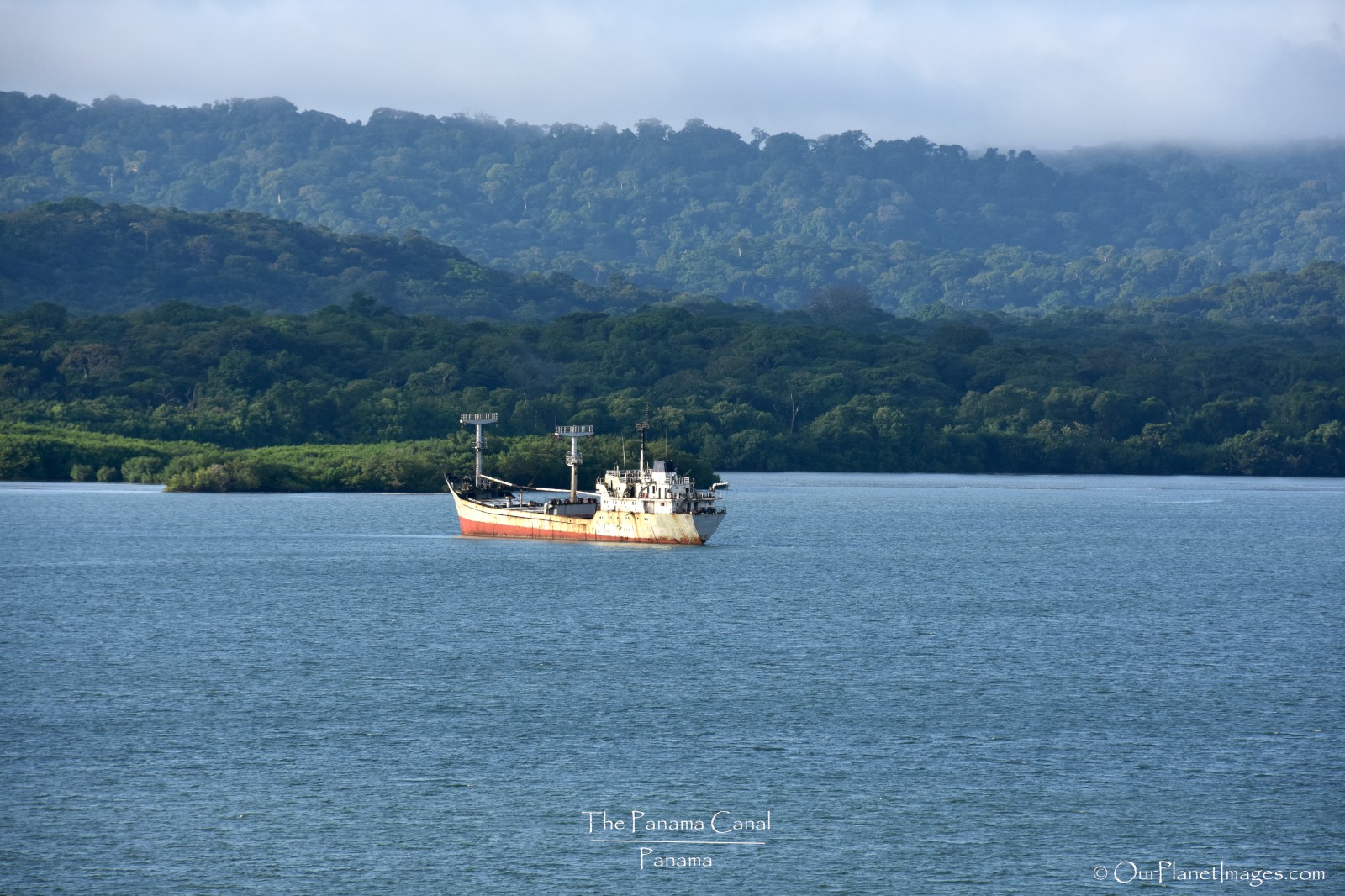
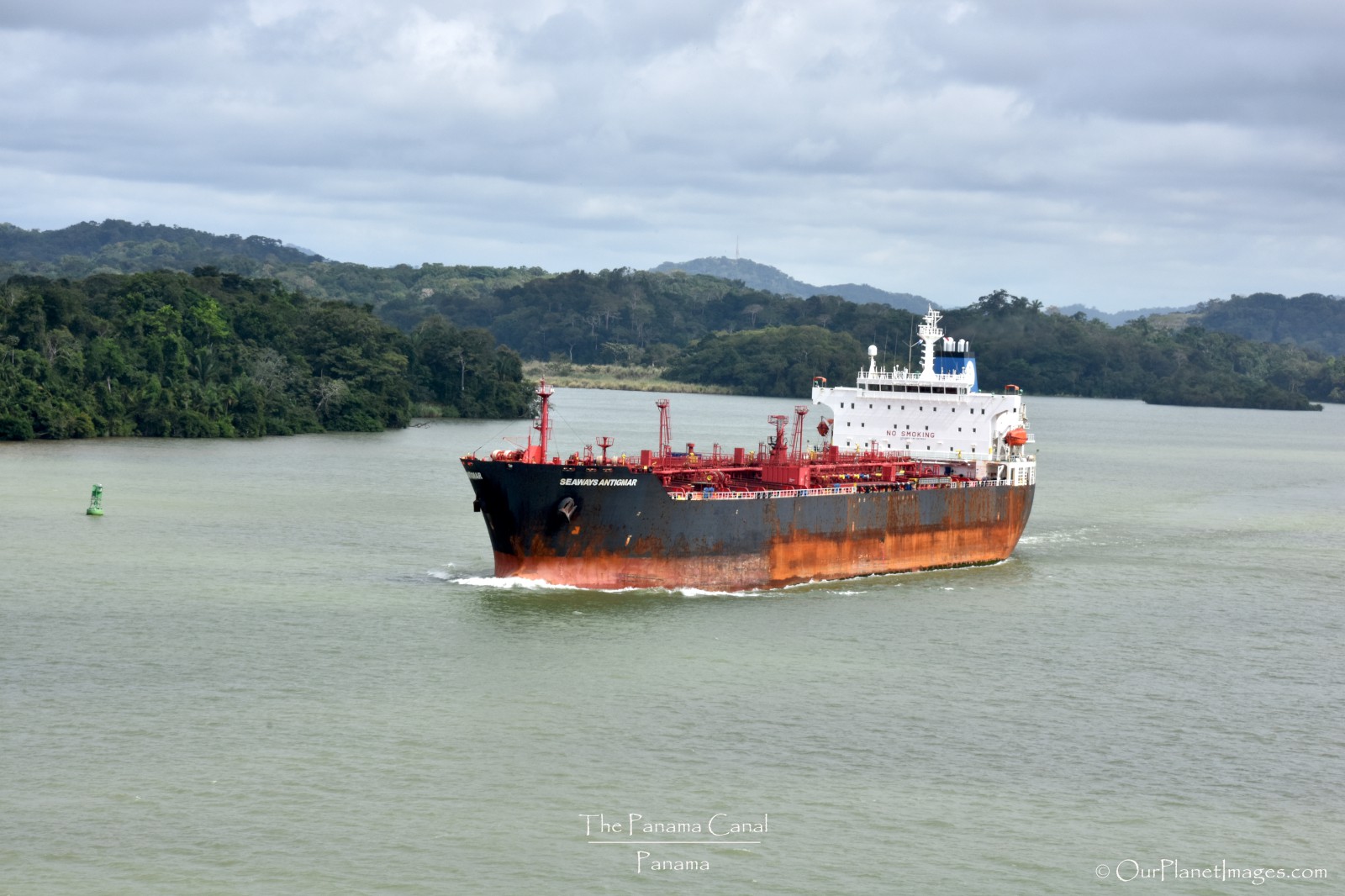
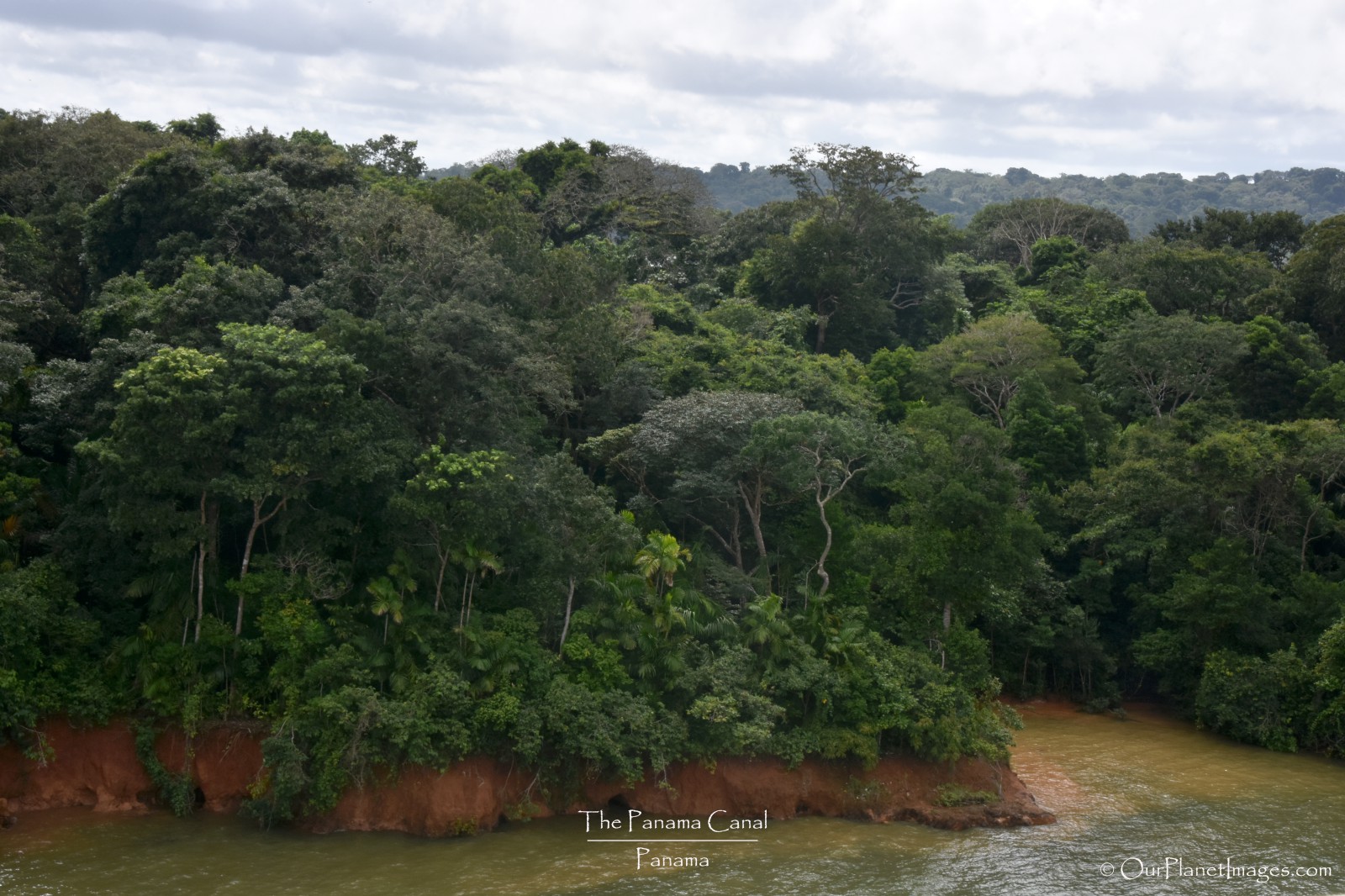
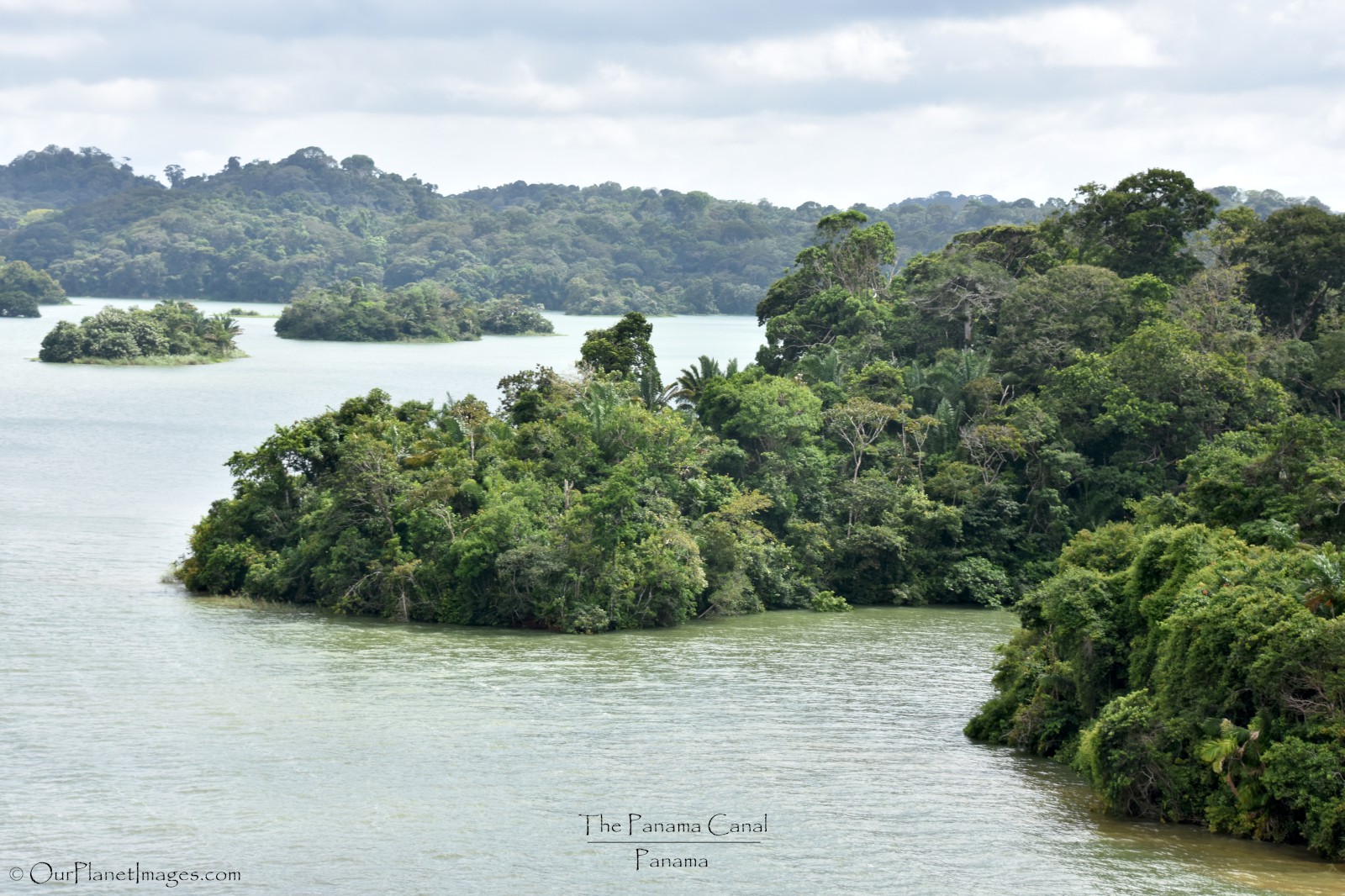
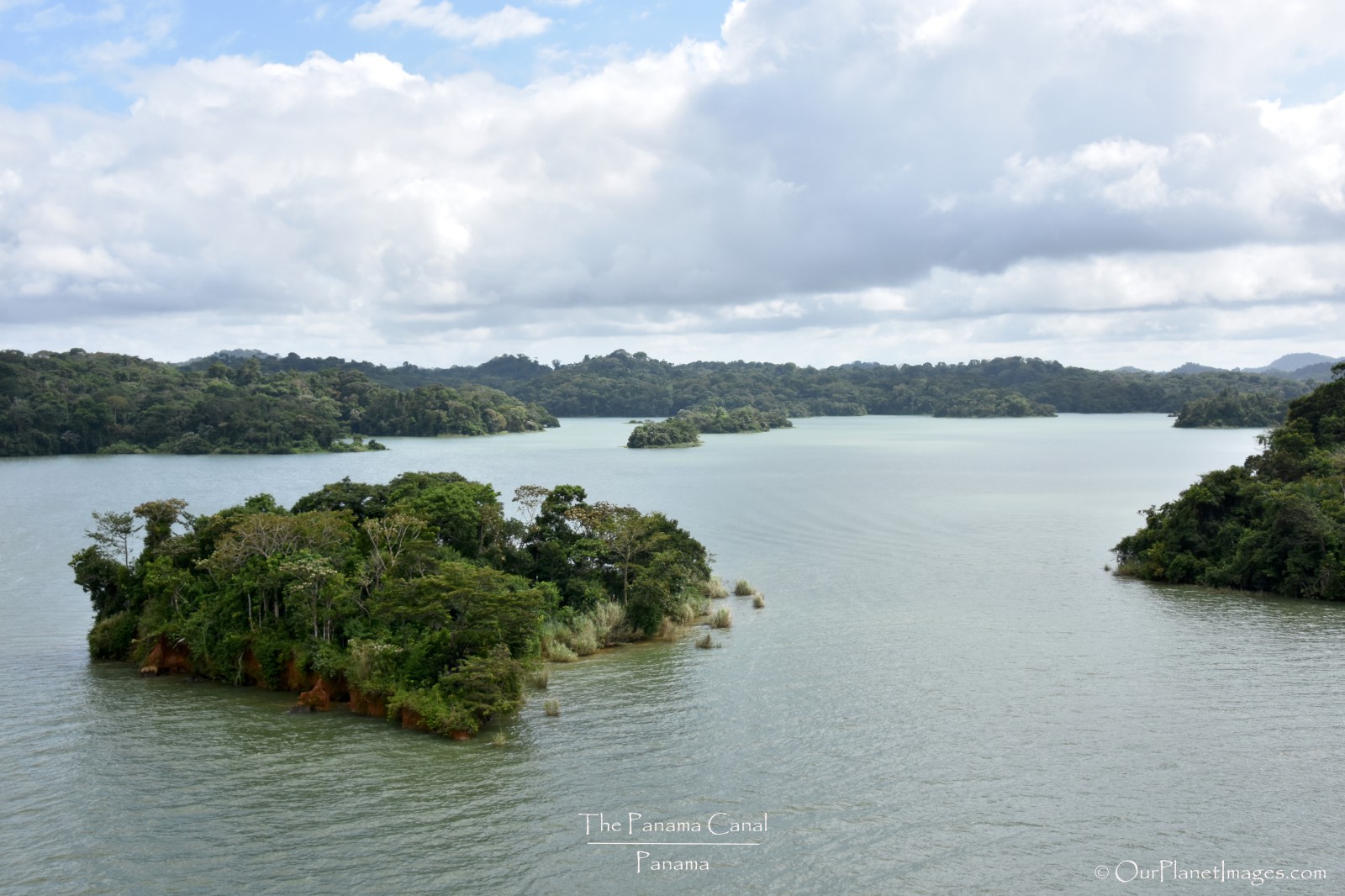
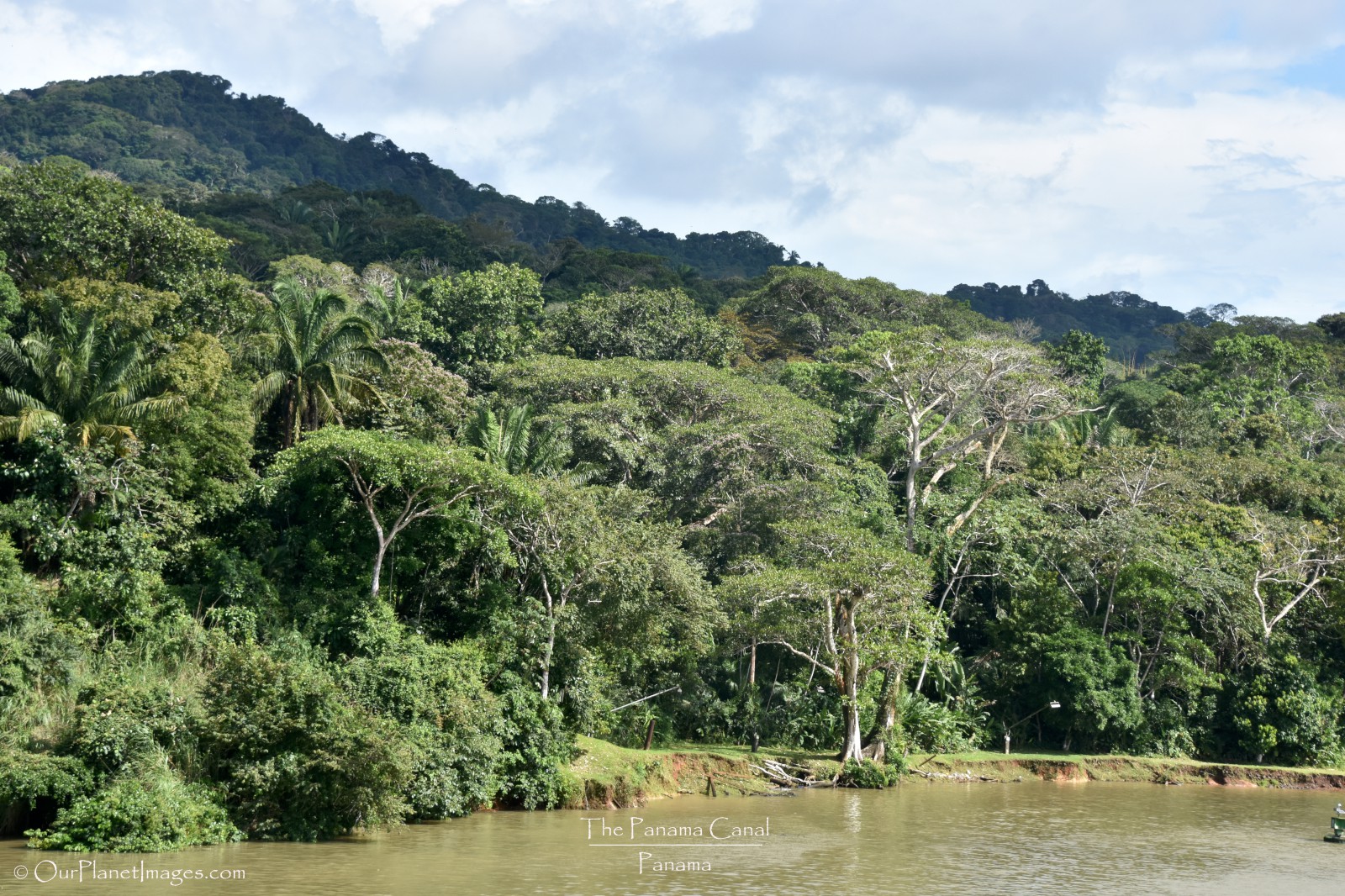
Lake Gatun enabled the canal to be created in the lowlands but the biggest obstacle was getting across the continental divide. The Culebra Cut is a man-made valley that required a deep excavation to link Lake Gatun with Lake Miraflores. This portion of the canal is probably what most people think the entire canal looks like as it is a narrow canal passageway that give you the feel of being on a river in the tropics. There are places along the Culebra Cut where the excavation signs can still be seen and I have included photos that show some of those places.
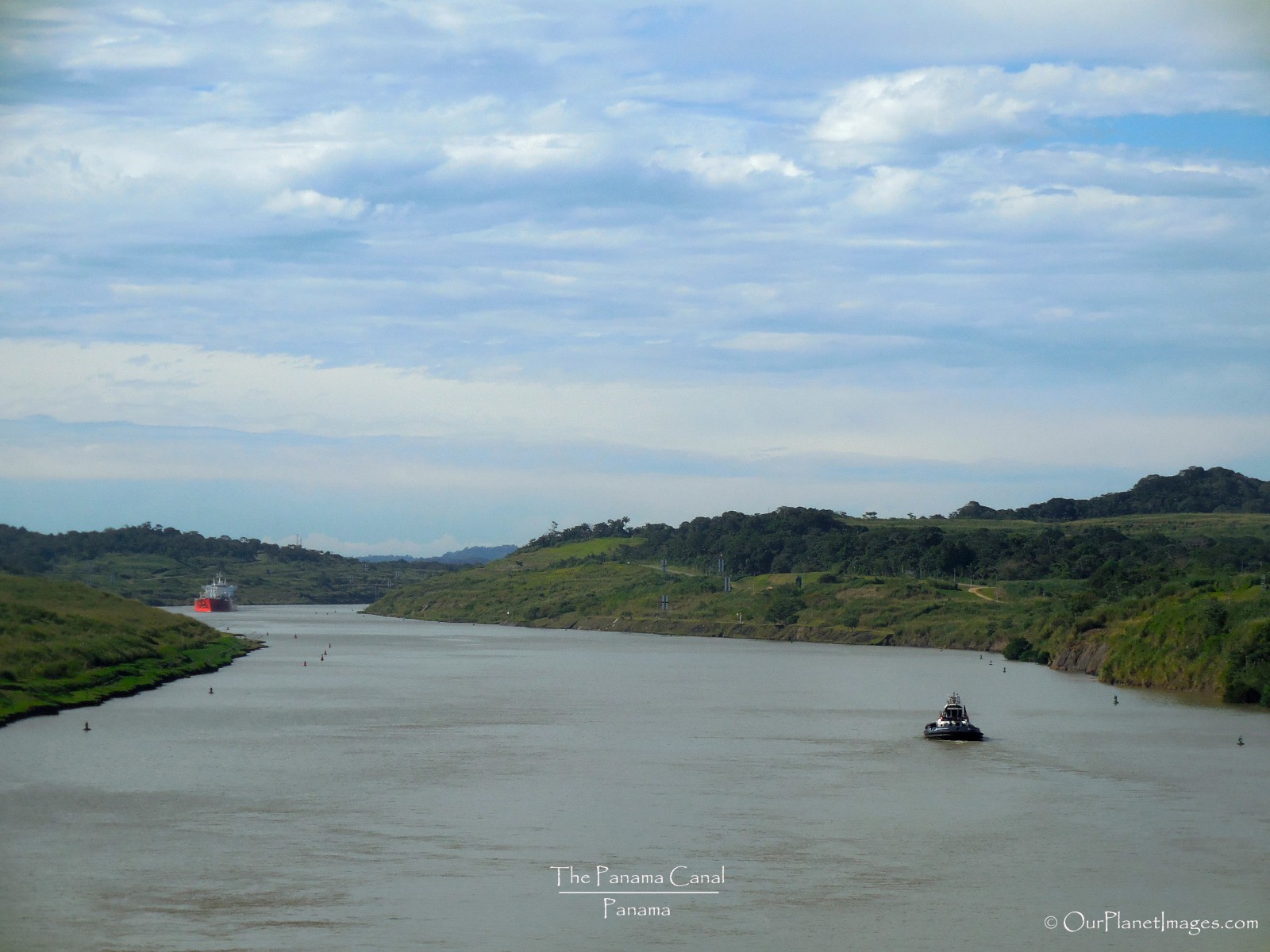
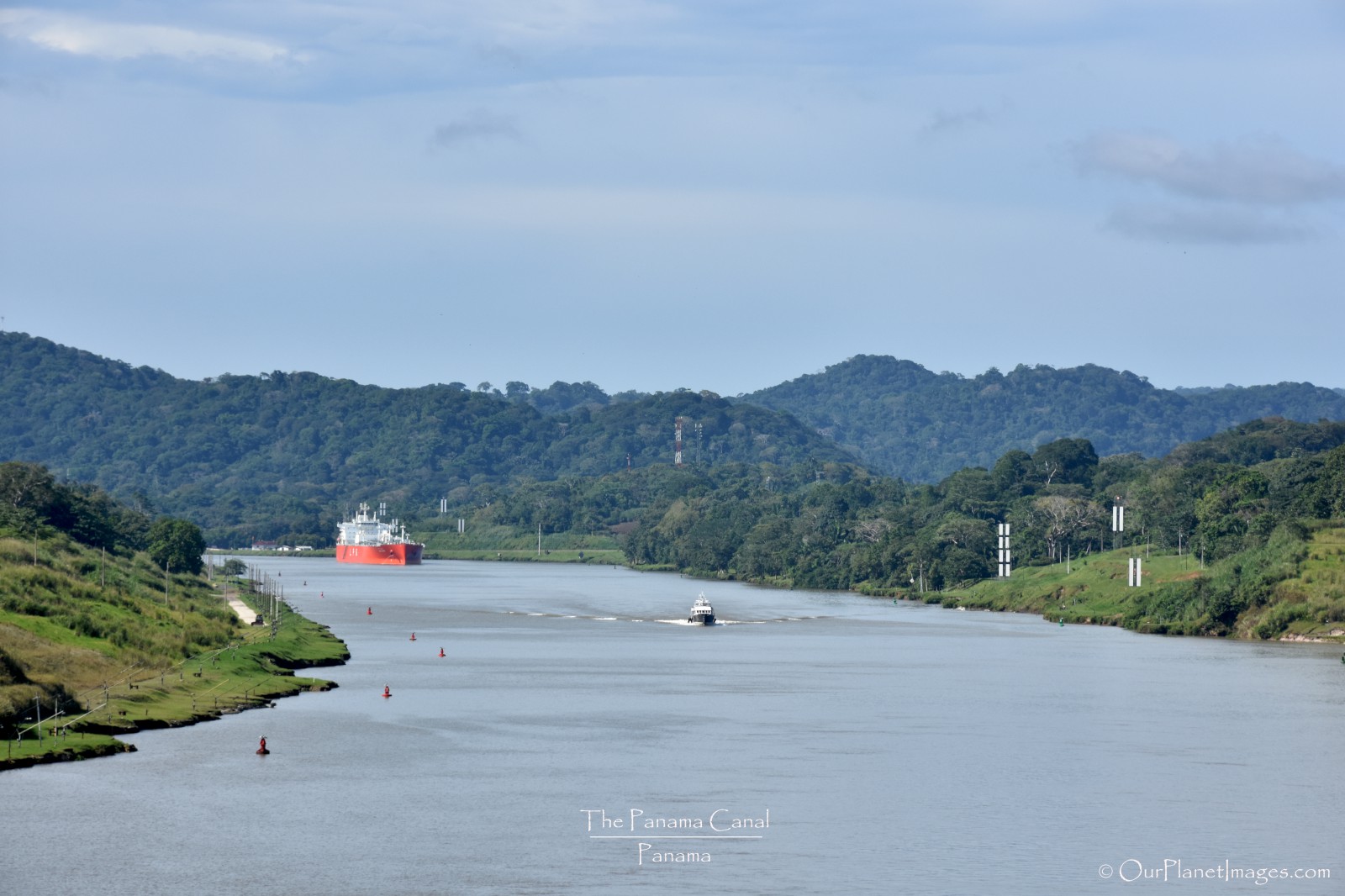
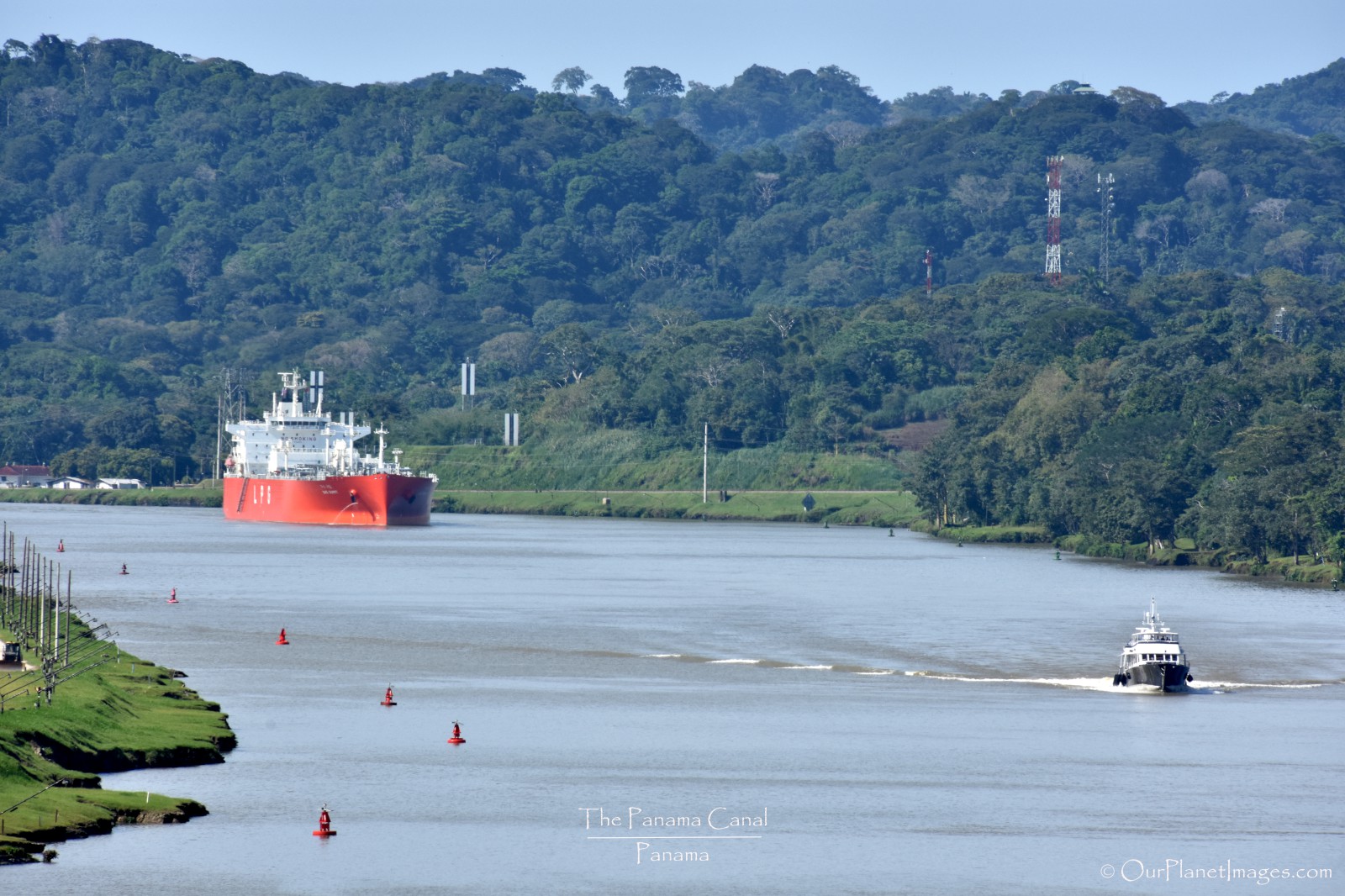
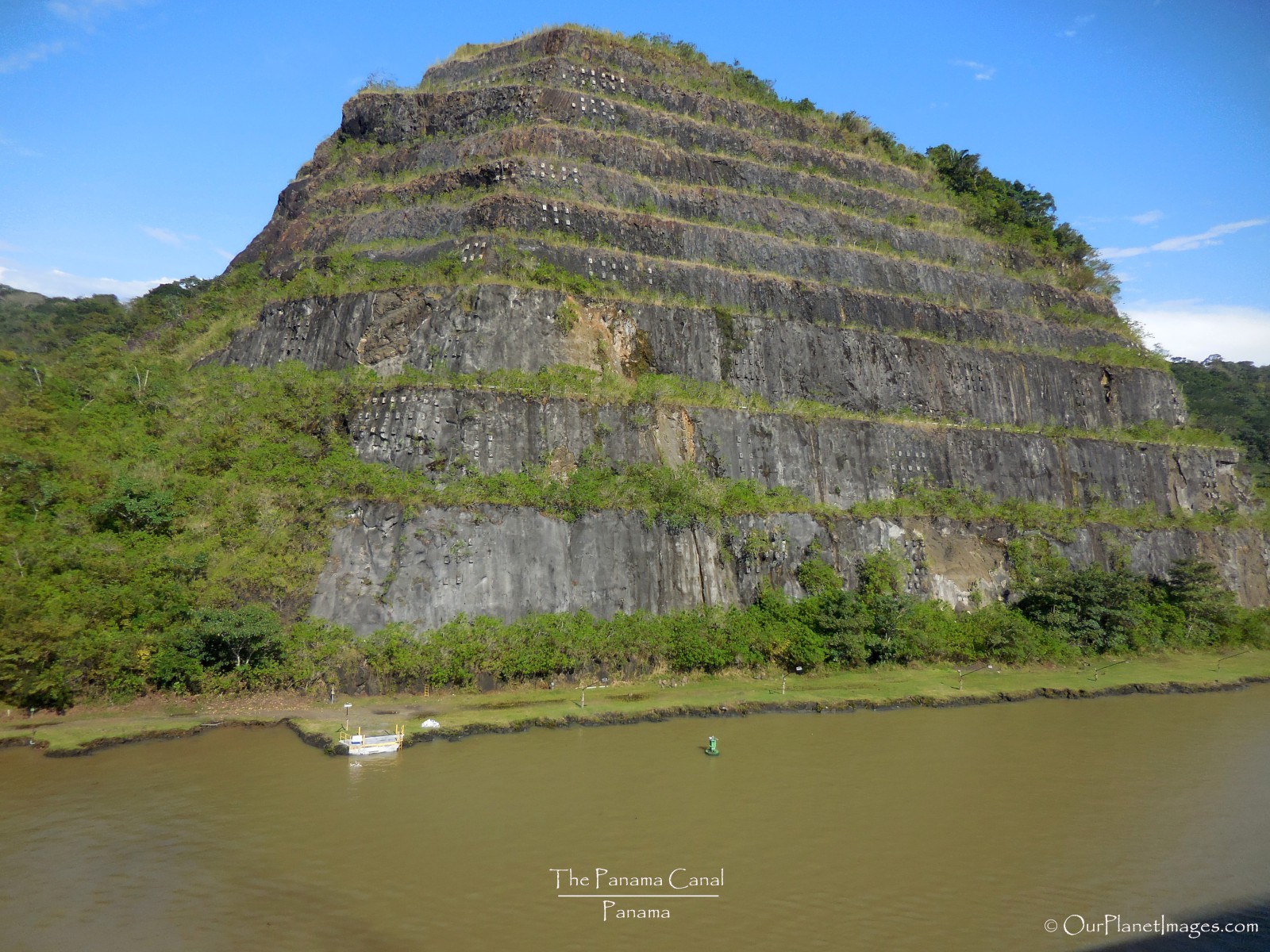
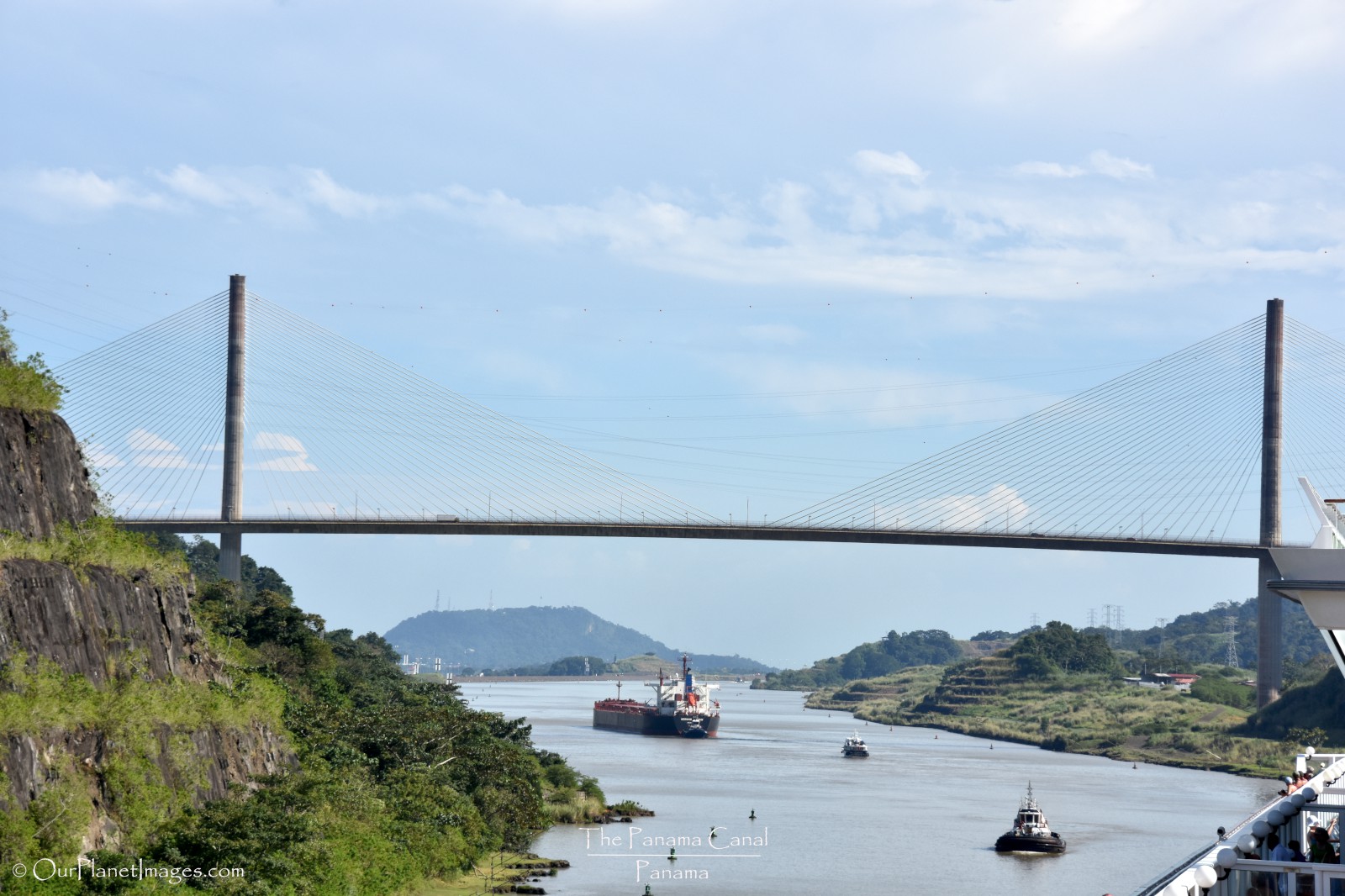
The Culebra Cut created a canal through the continental divide linking Lake Gatun to Lake Miraflores but the level of the canal is higher than the level of Lake Miraflores. The Pedro Miguel Locks lowers ships 31 ft. from the Culebra Cut into Lake Miraflores in a single lock stepdown. Lake Miraflores is a small lake that ships pass across for one mile where they enter the Miraflores Locks. The Miraflores Locks are a two stage stepdown set of locks that return ships back to sea level where they can enter the Pacific Ocean and continue their journey. The Pedro Miguel Locks, Lake Miraflores and the Miraflores Locks are all shown in a single photo below.

The Miraflores Locks are near Panama City and allow visitors to watch ships passing through the locks. There is also a museum with information on the Panama Canal when it was built and the improvements that have been made. I think it is a “must do” activity for visiting Panama!
The Dust on My Shoes

Watching huge ships being raised and lowered at the Miraflores Locks is very impressive and is an activity that everyone should do if you are in Panama City. Even more impressive is to be on a ship that is transit through the Panama Canal between the Atlantic and Pacific Oceans. It is a once in a lifetime activity that will be a very special memory to me.

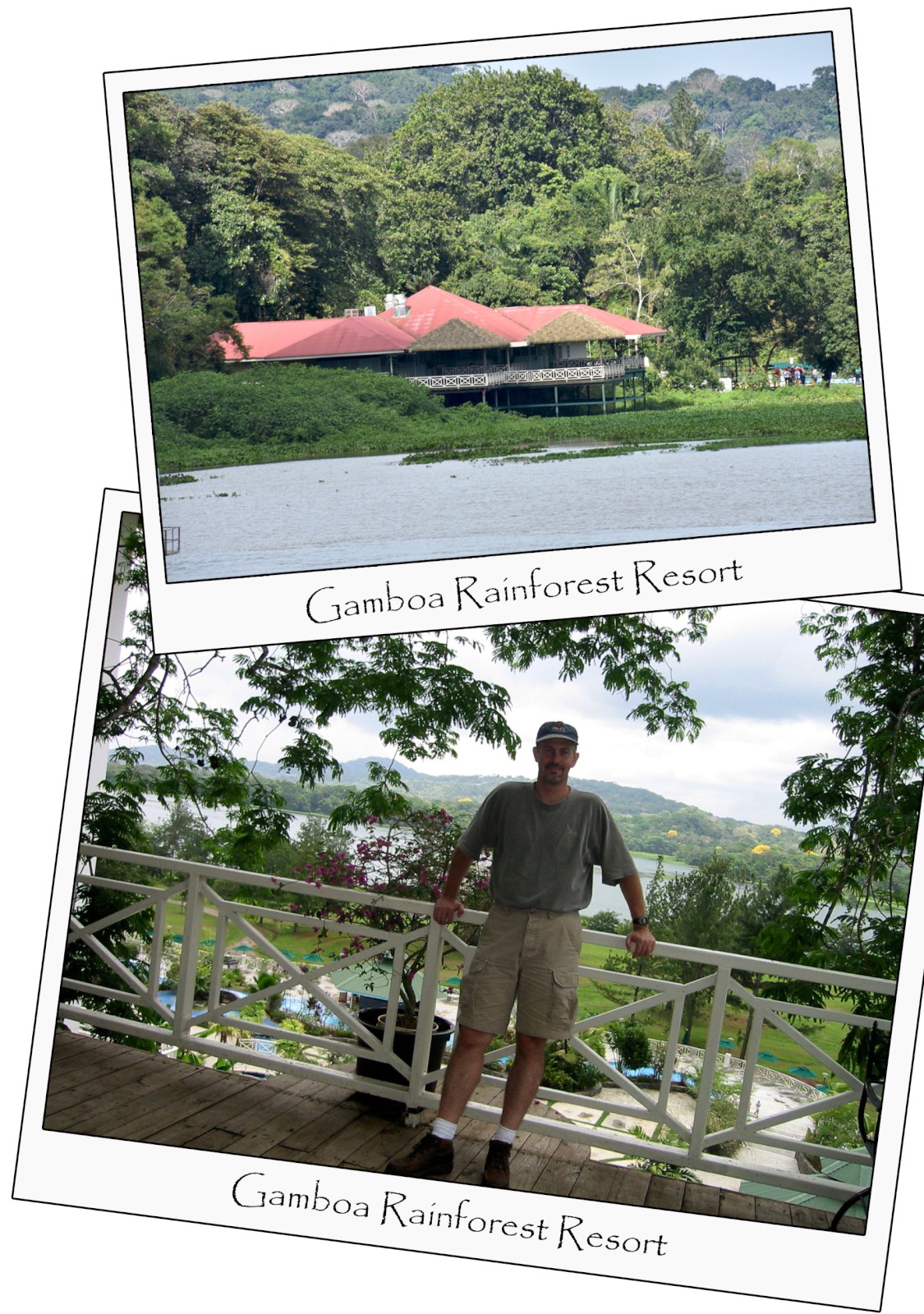
There is more to the Panama Canal than ships transiting the isthmus. The creation of Gatun Lake has enables some other opportunities for sportsmen and nature enthusiasts. Some of the activities that I did in the Panama Canal Zone when I lived in Panama were:
- Fishing for Peacock Bass – a large bass that can grow up to 3 ft. and over 25 lbs.
- Boat tours to see Monkey Island where whiteface monkeys live on an island in Gatun Lake.
- Bird watching on the many of the trails in the jungle. Panama has been one of the best places that I have been for birdwatching.